Search Result
Results for "
DPPH
" in MedChemExpress (MCE) Product Catalog:
2
Isotope-Labeled Compounds
| Cat. No. |
Product Name |
Target |
Research Areas |
Chemical Structure |
-
- HY-112053
-
DPPH
Maximum Cited Publications
11 Publications Verification
2,2-Diphenyl-1-picrylhydrazyl
|
Others
|
Metabolic Disease
|
|
DPPH (2,2-Diphenyl-1-picrylhydrazyl) is a stable free radical that can be used to measure the radical scavenging activity of antioxidants. The odd electron of nitrogen atom in DPPH is reduced by receiving a hydrogen atom from antioxidants to the corresponding hydrazine. DPPH method may be utilized in aqueous and nonpolar organic solvents and can be used to examine both hydrophilic and lipophilic antioxidants .
|
-
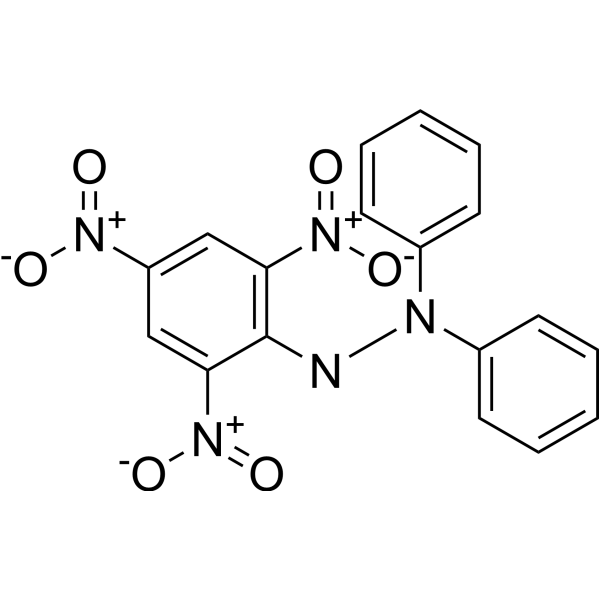
-
- HY-N3141
-
|
(-)-Olivile; Vladinol C
|
Others
|
Others
|
|
Olivil ((-)-Olivile) is a lignan that has weak DPPH radical-scavenging activity (EC50: 176 μM) .
|
-
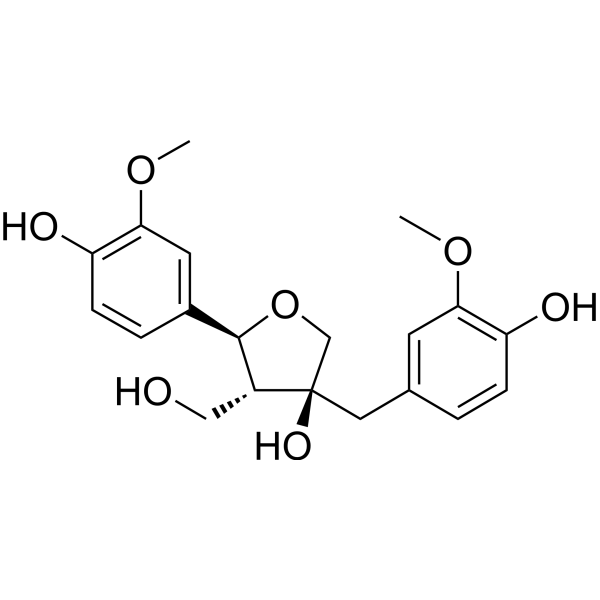
-
- HY-N3858
-
|
|
Others
|
Inflammation/Immunology
|
|
Erythristemine is an alkaloid that can be isolated from Erythrina lysistemon. Erythristemine has weak DPPH radical scavenging properties .
|
-

-
- HY-155346
-
|
|
Others
|
Others
|
|
Free radical scavenger 1 (compound 8) shows scavenging activity against the DPPH radical, with the IC50 of 43.39 μg/ml .
|
-
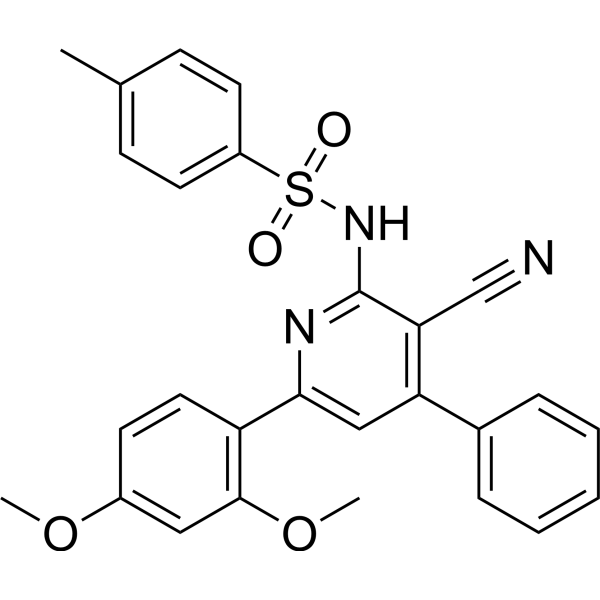
-
- HY-N8660
-
-
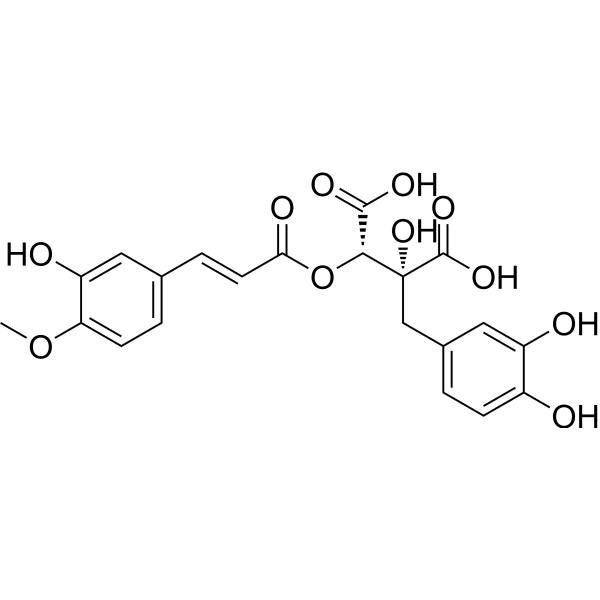
-
- HY-113121
-
|
|
Endogenous Metabolite
|
Cardiovascular Disease
|
|
Vanillylmandelic acid is the endproduct of epinephrine and norepinephrine metabolism. Vanillylmandelic acid can be used as an indication of the disorder in neurotransmitter metabolism as well. Vanillylmandelic acid has antioxidant activity towards DPPH radical with an IC50 value of 33 μM .
|
-
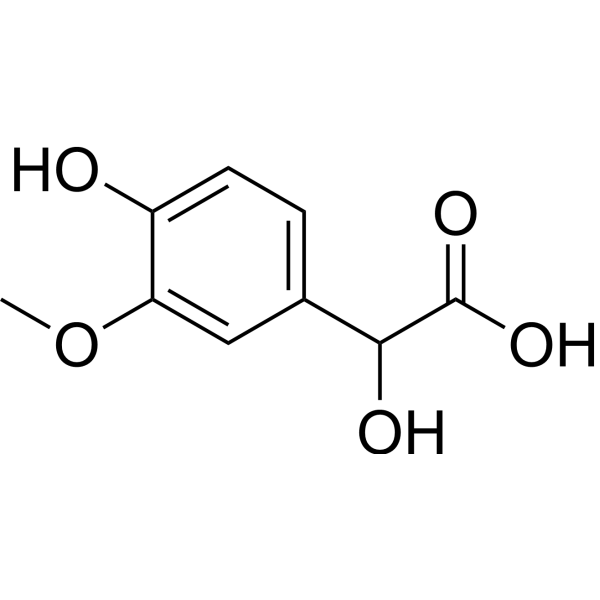
-
- HY-N8579
-
|
|
Others
|
Inflammation/Immunology
|
|
Eugenyl benzoate has the potency for scavenging of DPPH radical. Eugenyl Benzoate Derivatives can be used for development of BCL-2 inhibitors .
|
-
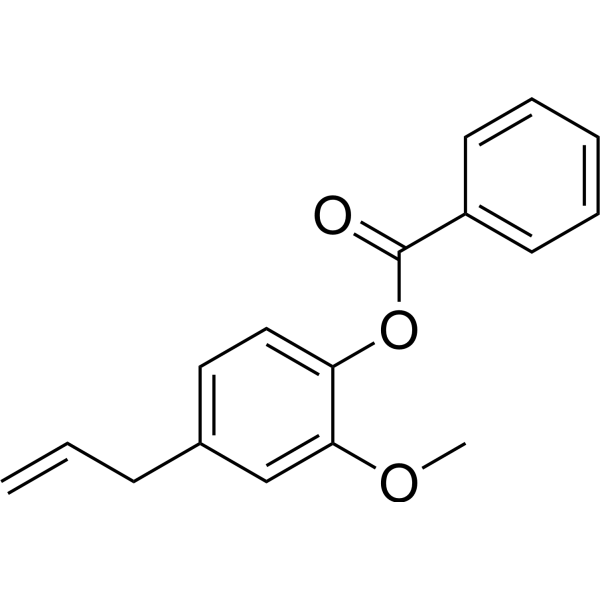
-
- HY-N11895
-
-
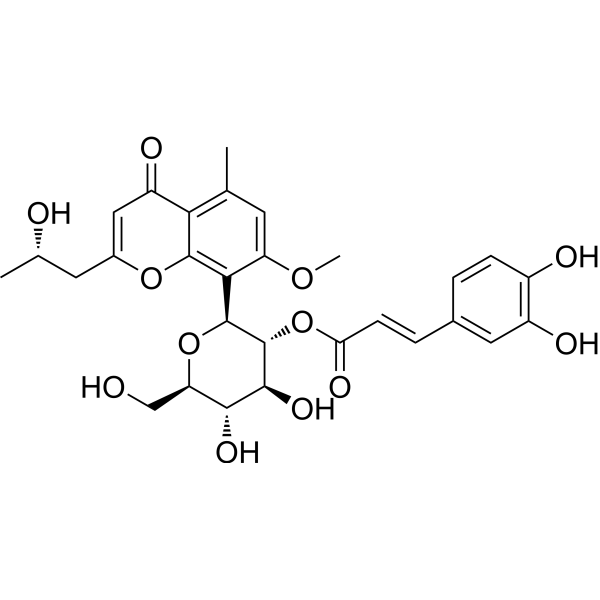
-
- HY-N8163
-
|
|
Others
|
Others
|
|
Kaempferol-3-O-α-L-rhamnopyranosyl-(1→6)-β-D-glucopyranosyl-(1→2)-β-D-glucopyranoside is an antioxidant with an IC50 of 26.6 μM (DPPH assay) .
|
-
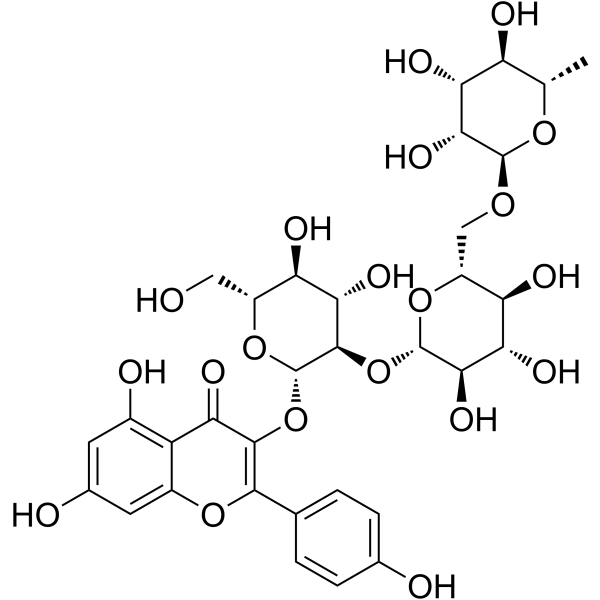
-
- HY-N10985
-
-
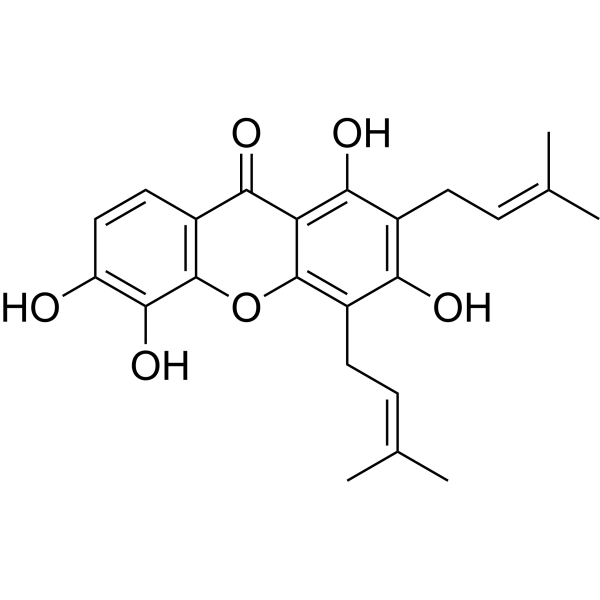
-
- HY-N9953
-
|
|
Others
|
Inflammation/Immunology
|
|
Chrysophanol 8-O-β-D-(6’-O-galloyl)glucopyranoside, an anthraquinone glucoside, can be isolated from Rheum undulatum L. Chrysophanol 8-O-β-D-(6’-O-galloyl)glucopyranoside has potent DPPH radical and ?O2 - scavenging activity .
|
-
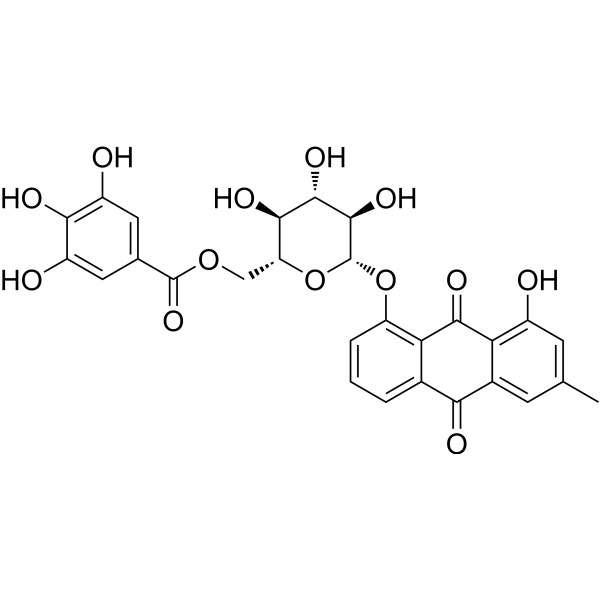
-
- HY-111523
-
|
|
Others
|
Metabolic Disease
|
|
Isomahanine, carbazole alkaloid, is an antioxidative agent. Isomahanine has DPPH radical scavenging activity with an IC50 value of 24 μM .
|
-
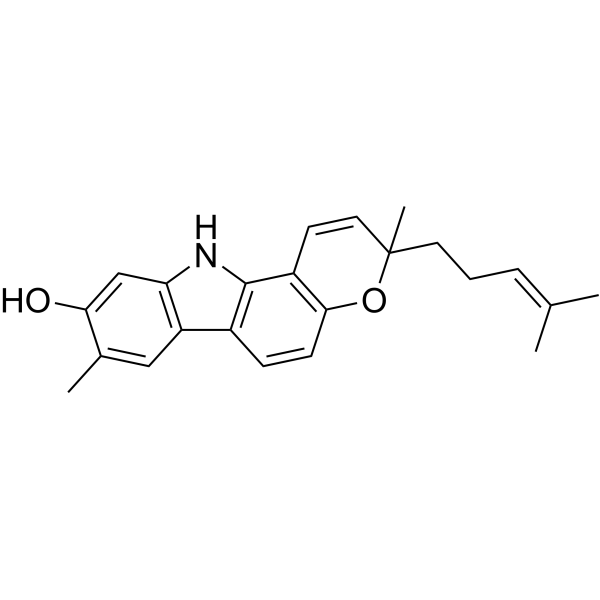
-
- HY-130294
-
|
|
Elastase
|
Inflammation/Immunology
|
|
Pyracrenic acid is an elastase inhibitor (IC50 = 2.42 µM), can be obtained from the bark of Pyracantha crenulata. Pyracrenic acid has DPPH free radical scavenging activity and anti-inflammatory activity .
|
-

-
- HY-N3349A
-
|
|
Others
|
Others
|
|
(-)-Lyoniresinol is a lignan isolated from the Tarenna attenuata with antioxidant activities. (-)-Lyoniresinol has radical scavenging activities against DPPH with an IC50 of 82.4 μM .
|
-
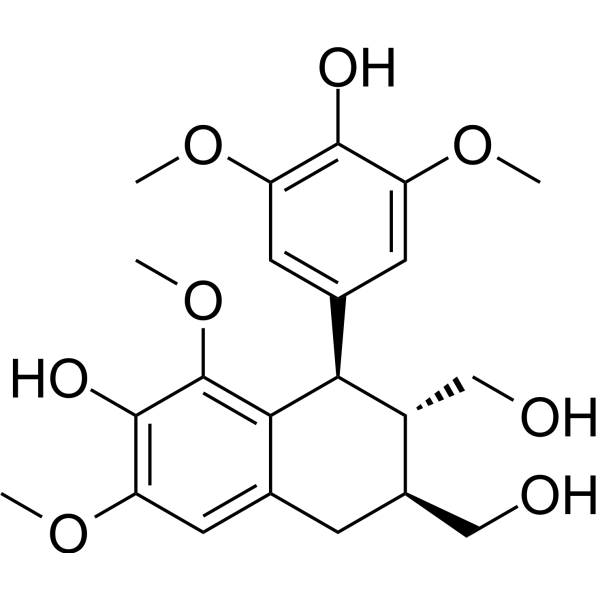
-
- HY-N3349
-
|
|
Others
|
Others
|
|
Lyoniresinol is a lignan isolated from the Tarenna attenuata with antioxidant activities. Lyoniresinol has radical scavenging activities against DPPH with an IC50 of 82.4 μM .
|
-
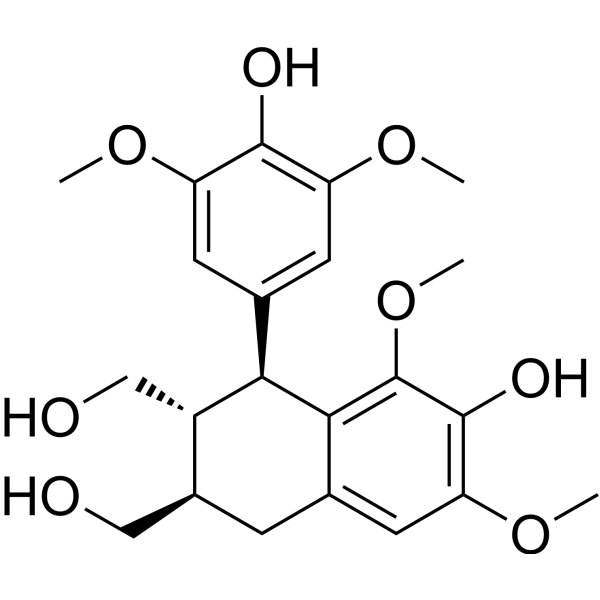
-
- HY-N7518
-
|
|
Others
|
Inflammation/Immunology
|
|
Eulophiol shows the 1,1-diphenyl-2-picrylhydrazyl (DPPH) free radical scavenging activity with an EC50 of 27.7μM. Antioxidant activity .
|
-
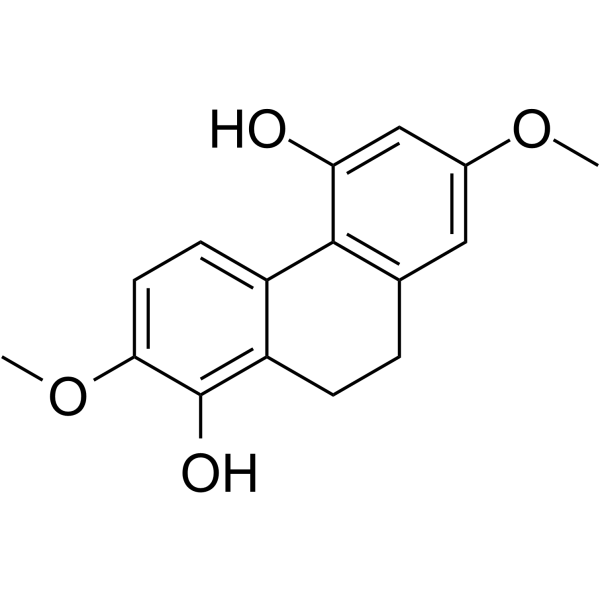
-
- HY-N10020
-
|
|
Lipoxygenase
|
Inflammation/Immunology
|
|
Patulitrin has scavenging effect in the DPPH radical. Patulitrin inhibits soybean lipoxygenase. Patulitrin also has antihypertensive effect. Patulitrin is an antioxidant flavonoid that can be isolated from Anthemis tinctoria .
|
-

-
- HY-155123
-
|
|
Monoamine Oxidase
Xanthine Oxidase
|
Inflammation/Immunology
|
|
Antioxidant agent-13 (Compound 5f) is an antioxidant agent. Antioxidant agent-13 inhibits DPPH and FRAP with IC50s of 80.33 and 85.69 μM. Antioxidant agent-13 also inhibits LOX and XO enzymes with IC50s of 16.85 and 23.01 μM .
|
-
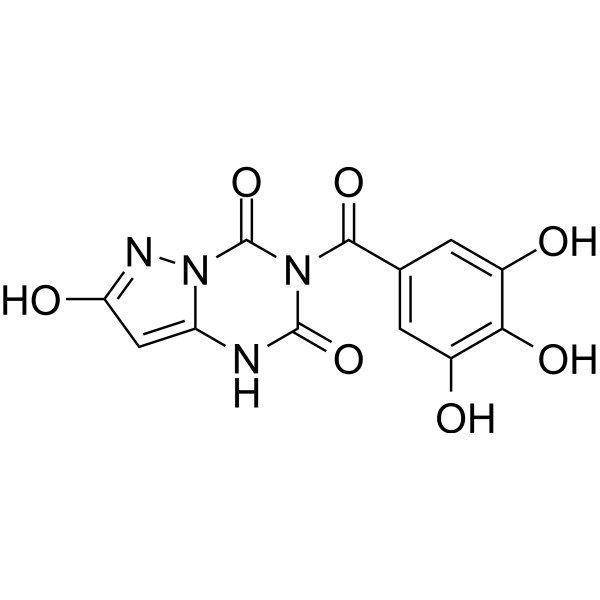
-
- HY-121811
-
-
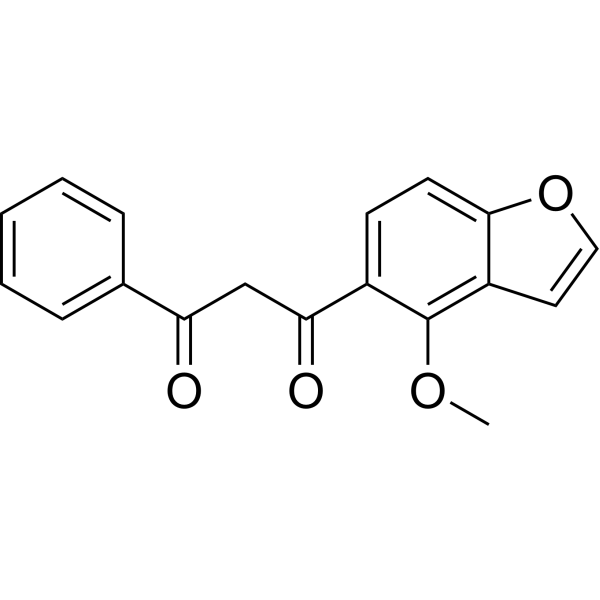
-
- HY-N8194
-
|
Syringetin 3-O-β-D-glucoside
|
Others
|
Neurological Disease
|
|
Syringetin-3-O-glucosid (Syringetin 3-O-β-D-glucoside), a flavonol glycoside, shows relatively weak DPPH and ABTS radical scavenging activity .
|
-
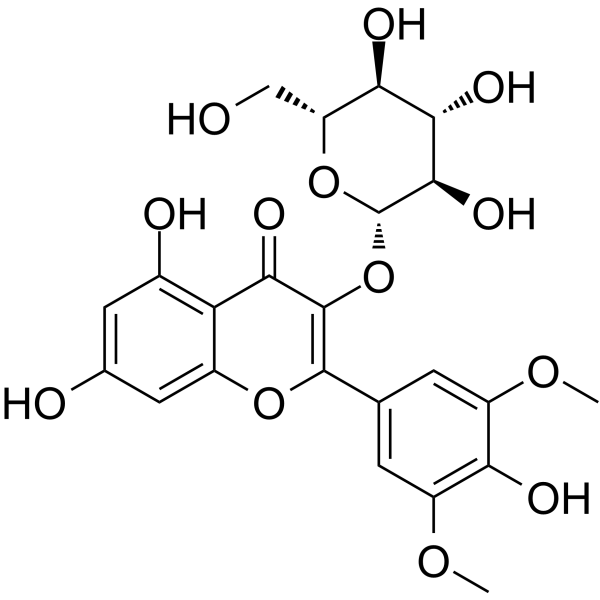
-
- HY-N9051
-
|
|
Glucosidase
|
Inflammation/Immunology
Cancer
|
|
6-Prenylquercetin-3-Me ether is a natural product that can be extracted from G. uralensis leaves.
6-Prenylquercetin-3-Me ether has radical scavenging activity toward DPPH. 6-Prenylquercetin-3-Me ether also has inhibitory activity against α-glucosidase .
|
-
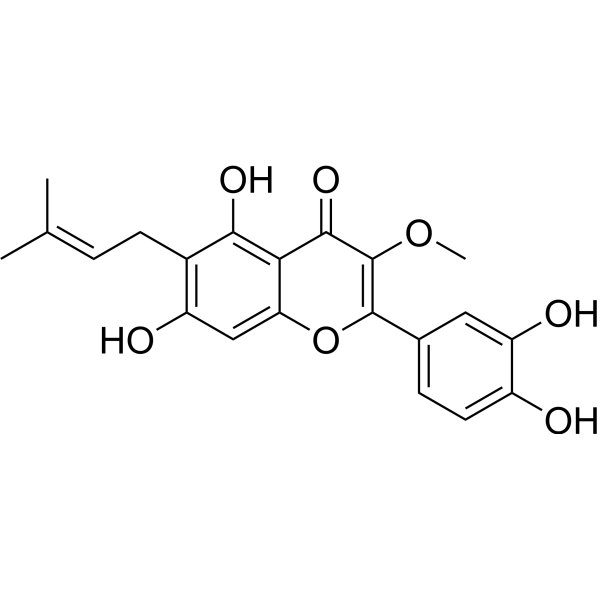
-
- HY-N3985
-
|
|
Others
|
Cancer
|
|
Gyrophoric acid is a good ultraviolet filter in lichen populations. Gyrophoric acid shows DPPH radical scavenging activity with an IC50 value of 105.75 µg/ml .
|
-
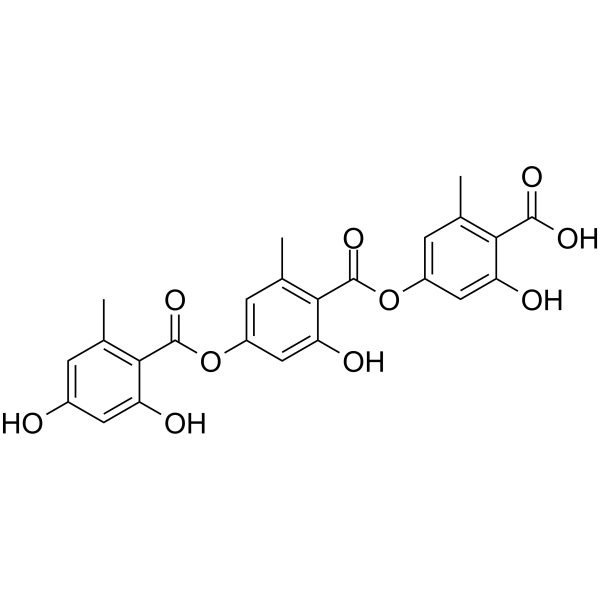
-
- HY-156711
-
|
|
Others
|
Inflammation/Immunology
|
|
Ternatumoside II is a flavonoid glycoside that can be isolated from R. crenulata. Ternatumoside II can stimulate IFN-γ expression. Ternatumoside II has radical-scavenging activities (IC50s: 260.5 μM and 320.2 μM for DPPH and ABTS) .
|
-
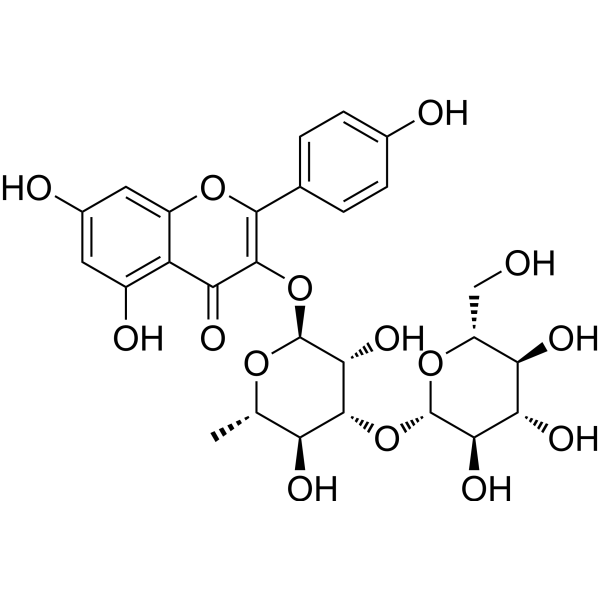
-
- HY-149670
-
|
|
Ferroptosis
|
Inflammation/Immunology
|
|
Ferroptosis-IN-3 (Compound 25) is a ferroptosis inhibitor. Ferroptosis-IN-3 inhibits RSL3-induced ferroptosis (EC50: 8.6?nM in HT-1080?cells). Ferroptosis-IN-3 scavenges DPPH and ABTS radicals (EC50: 3.94?and 6.3 μM respectively). Ferroptosis-IN-3 decreases lipid peroxidation .
|
-
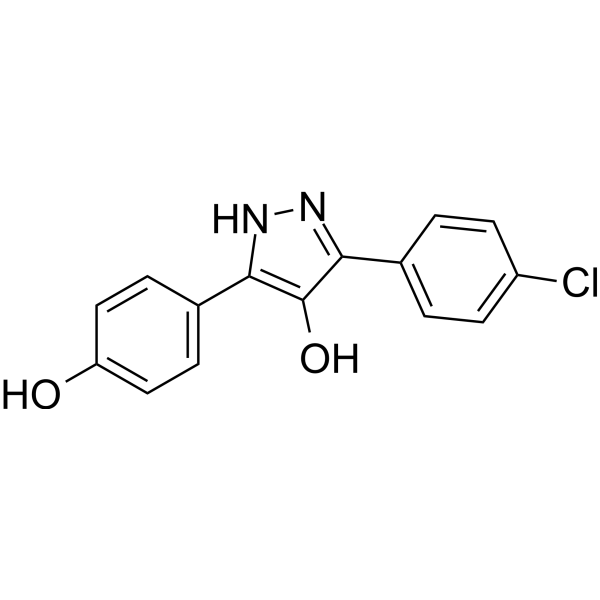
-
- HY-N10294
-
|
|
HIV
|
Infection
Inflammation/Immunology
|
|
Epicoccone B, firstly reported from C. globosum, exhibits the DPPH free radical scavenging ability with IC50 value of 10.8 μM, and has potent α-glucosidase inhibition with IC50 value of 27.3 μM. Anti-HIV activity .
|
-

-
- HY-N9895
-
|
|
Others
|
Infection
Inflammation/Immunology
|
|
3,5-Dicaffeoyl-epi-quinic acid can be extracted from Chrysanthemum morifolium. 3,5-Dicaffeoyl-epi-quinic acid has antioxidant activities. 3,5-Dicaffeoyl-epi-quinic acid can scavenge DPPH radical and superoxide anion radical, with IC50s of 5.6 and 2.9 μg/mL respectively .
|
-
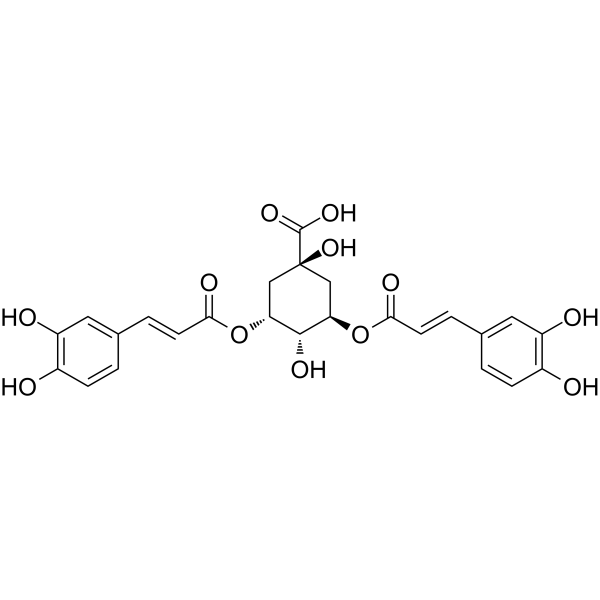
-
- HY-149473
-
|
|
Cholinesterase (ChE)
|
Neurological Disease
|
|
AChE-IN-39 (Compound 7c) is an AChE inhibitor (IC50: 0.058 μM). AChE-IN-39 has DPPH scavenging activity. AChE-IN-39 improves the cognitive impairment in AlCl3-induced amnesia animal model. AChE-IN-39 can be used for research of Alzheimer's disease .
|
-
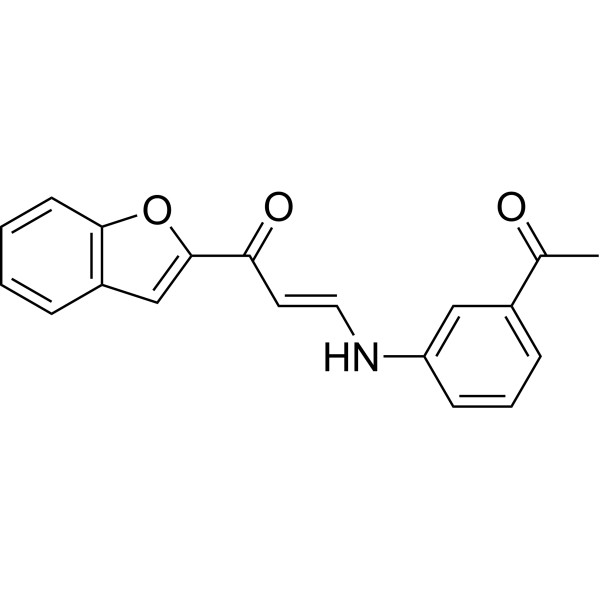
-
- HY-N7155
-
|
|
Reactive Oxygen Species
|
Inflammation/Immunology
|
|
2,4,7-Trihydroxy-9,10-dihydrophenanthrene is a dihydrophenanthrene derivative that can be isolated from the air-dried whole plant of Pholidota chinensis Lindl.. 2,4,7-Trihydroxy-9,10-dihydrophenanthrene shows potent activities of IC50 at 16.2 μM in DPPH radical-scavenging assay .
|
-
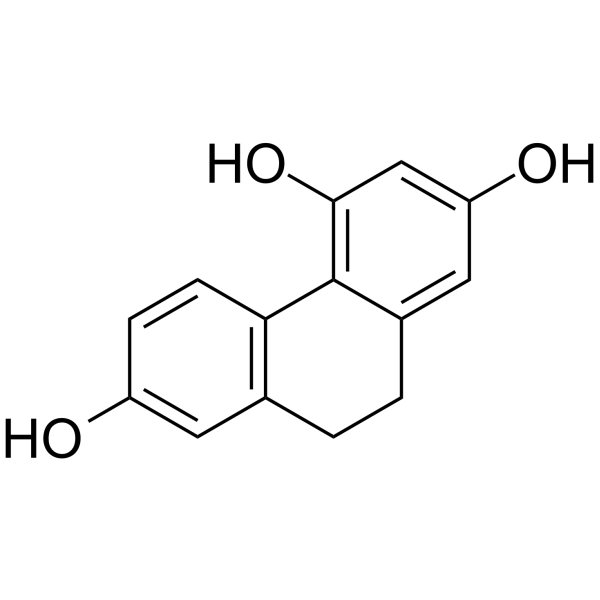
-
- HY-W001542
-
-
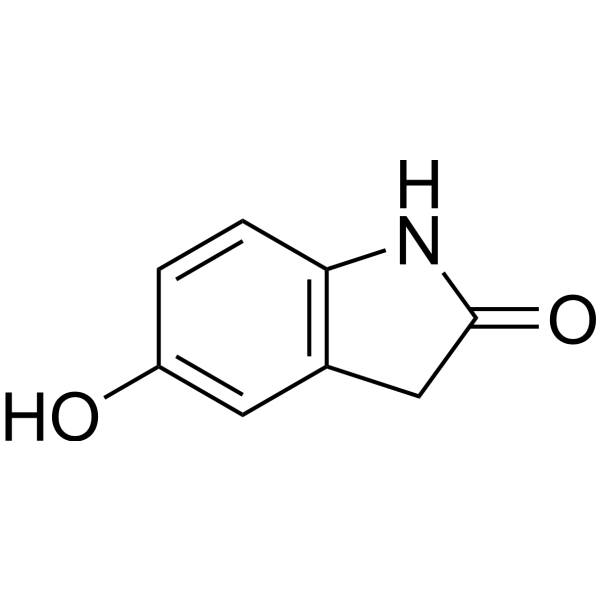
-
- HY-N3554
-
|
(+)-Catechol 7-β-D-xylopyranoside
|
Others
|
Others
|
|
Catechin-7-O-β-D-xylopyranoside is an antioxidant compound with strong DPPH free radical scavenging ability. Catechin-7-O-β-D-xylopyranoside can be extracted from birch inner bark and nepeta stem bark .
|
-
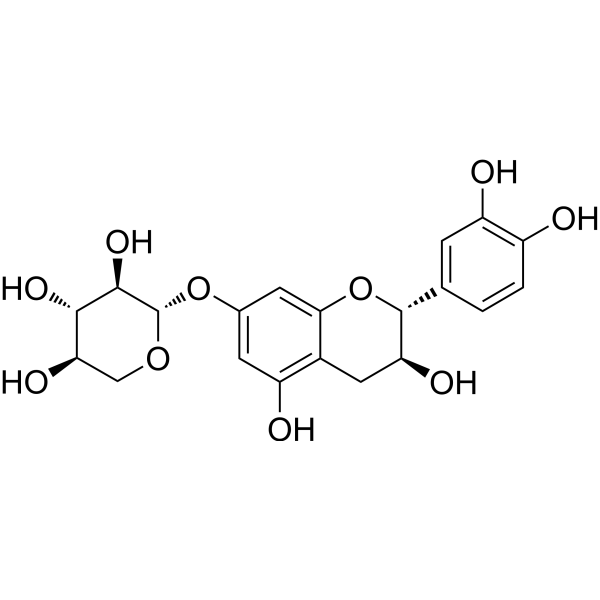
-
- HY-N10742
-
|
|
Reactive Oxygen Species
|
Cardiovascular Disease
|
|
Maritimein is an aurone that can be isolated from Coreopsis tinctoria. Maritimein shows strong diphenyl(2,4,6-trinitrophenyl)iminoazanium (DPPH) radical-scavenging activity with an IC50 value of 4.12 μM. Maritimein can be used for the research of cardiovascular disease .
|
-
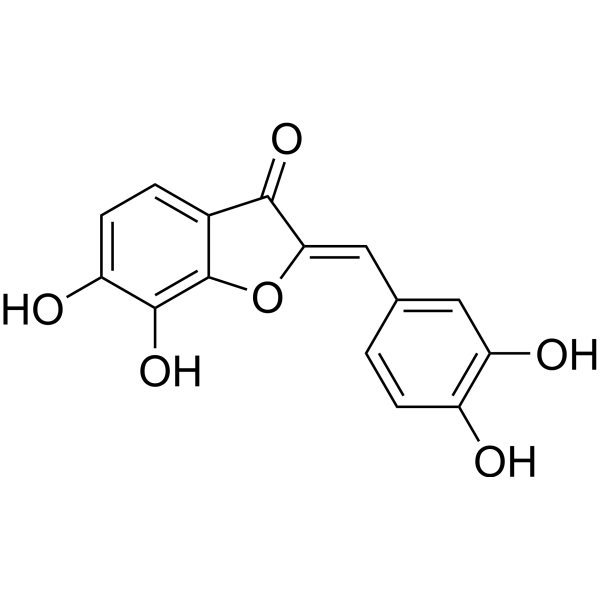
-
- HY-N6959
-
|
|
Reactive Oxygen Species
Apoptosis
|
Metabolic Disease
|
|
Osmundacetone is a natural product isolated from Osmundae Rhizoma, with neuroprotective and anti-apoptotic effects. Osmundacetone also has DPPH scavenging activity and anti-oxidative stress activity. Osmundacetone inhibits MAPK phosphorylation, including JNK, ERK, and p38 kinase. Osmundacetone can be a potential agent for the research of neurodegenerative diseases .
|
-
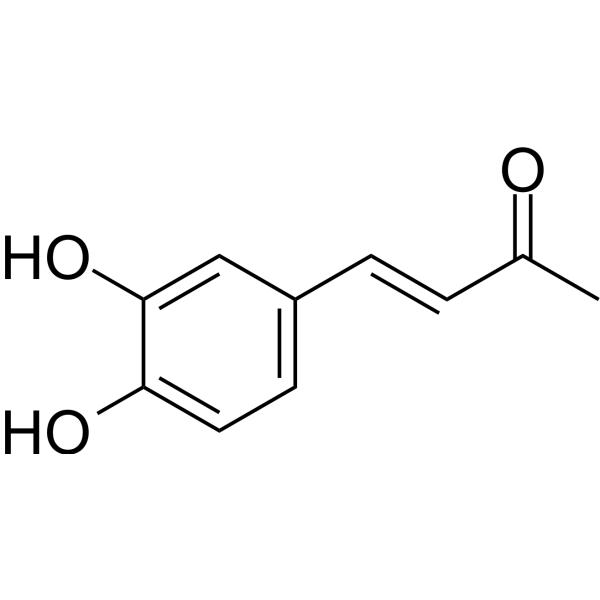
-
- HY-149008
-
|
|
Amylases
|
Metabolic Disease
Cancer
|
|
α-Amylase-IN-3 (Compound 4) is a none-competitive type of α-Amylase inhibitor with an IC50 value of 18.04 μM, which also has radical scavenging activities (DPPH and ABTS) with IC50 values of 16.04 μM (DPPH) and 16.99 μM (ABTS), respectively. α-Amylase-IN-3 has good protein–ligand interactions profile against α-Amylase. α-Amylase-IN-3 may have pharmacological activities such as anti-oxidative, anti-inflammatory inhibitory, which is helpful for the development of diabetes and oxidative stress associated disease .
|
-
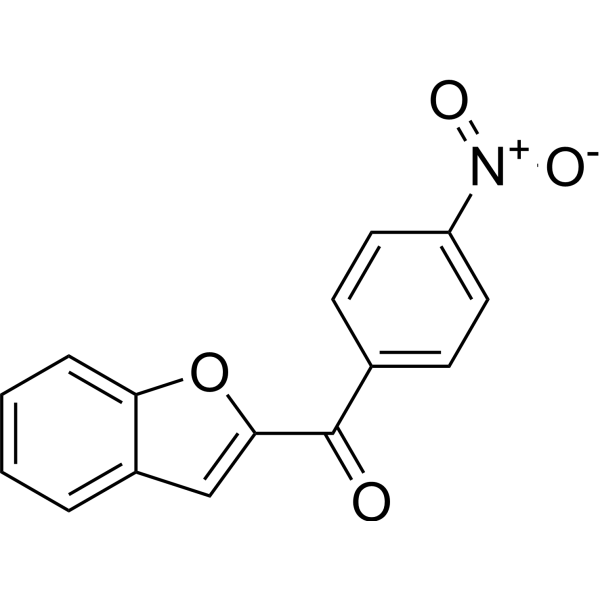
-
- HY-N10927
-
|
|
Others
|
Others
|
|
2,11,12-Trihydroxy-7,20-epoxy-8,11,13-abietatriene, a diterpenoid, has significant effects on DPPH radical scavenging activity with an IC50 value of 20.0 µM. 2,11,12-Trihydroxy-7,20-epoxy-8,11,13-abietatriene shows potent antioxidant activity .
|
-
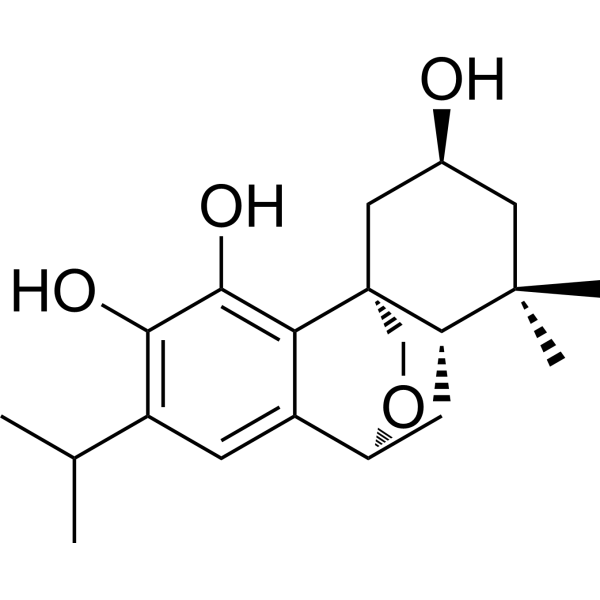
-
- HY-N3421
-
|
|
Interleukin Related
TNF Receptor
Influenza Virus
|
Infection
Inflammation/Immunology
Cancer
|
|
Koaburaside is a cytoprotective and anti-inflammatory natural compound. Koaburaside shows antioxidant activity with an IC50 of 9.0 μM for DPPH-free radical scavenging assay. Koaburaside inhibits histamine release and expressions of IL-6 and TNF-α in human mast cells. Koaburaside also effectively inhibits influenza A neuraminidase .
|
-
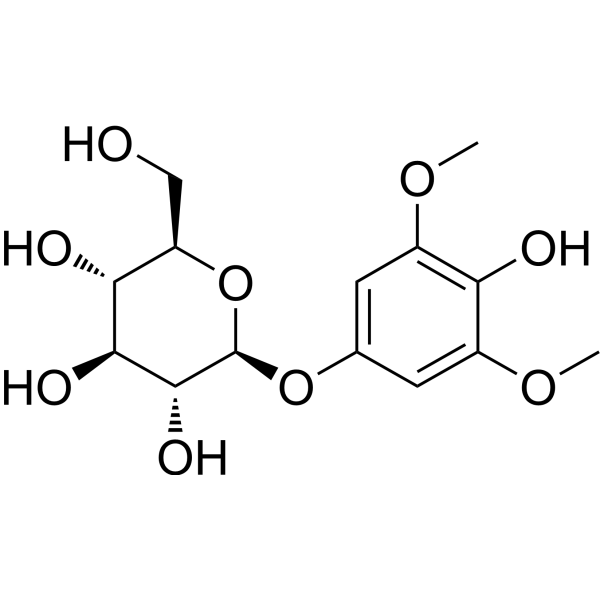
-
- HY-149976
-
|
|
Pim
|
Cancer
|
|
Pim-1 kinase inhibitor 4 (Compound 10f) is a Pim-1 kinase inhibitor (IC50: 17.01 nM). Pim-1 kinase inhibitor 4 also has antioxidant activity and inhibits DPPH. Pim-1 kinase inhibitor 4 induces apoptosis in PC-3 cell, and inhibits PC-3 cell growth with an IC50 of 16 nM. Pim-1 kinase inhibitor 4 can be used for research of prostate cancer .
|
-
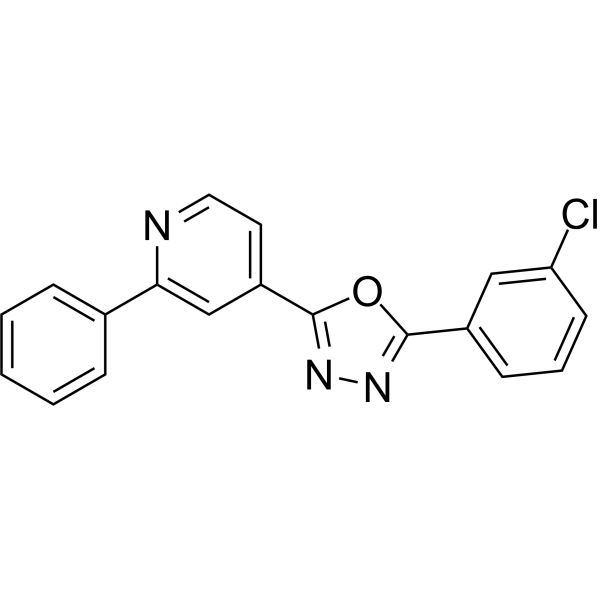
-
- HY-111898
-
|
|
Others
|
Cancer
|
|
Epirosmanol is a nature diterpene lactone from S. officinalis. Epirosmanol shows anti-cancer activity and inhibits melanin biosynthesis against melanoma cells. Epirosmanol also exhibits DPPH radical scavenging activity .
|
-
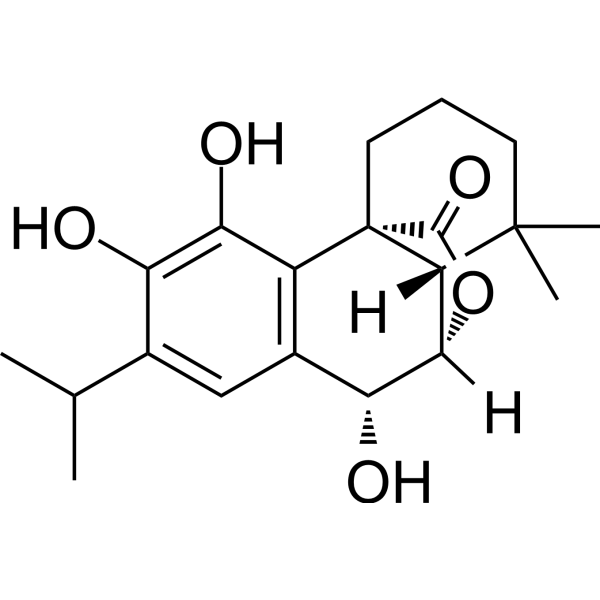
-
- HY-149313
-
|
|
Amylases
|
Metabolic Disease
|
|
α Amylase-IN-1 (Compound 11) is an α-Amylase inhibitor with an IC50 value of 0.5509 μM. α Amylase-IN-1 has antioxidant activity with an IC50 value of 53.49 μM for scavenging DPPH free radicals. IC50 can be used in the study of diabetes and oxidative stress-related diseases.
|
-
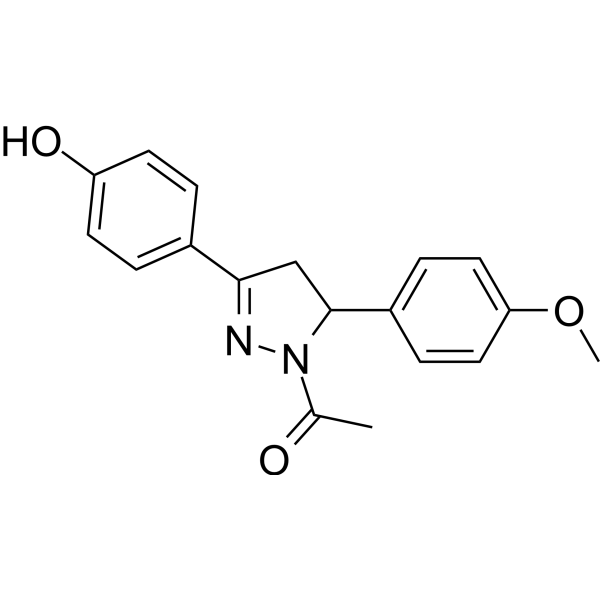
-
- HY-146169
-
|
|
Reactive Oxygen Species
Microtubule/Tubulin
|
Cancer
|
|
Antitumor agent-68 is a potent tubulin inhibitor. Antitumor agent-68 shows potent anticancer activity with IC50s of 3.6 and 3.8 μM for HeLa and MCF-7 cells, respectively. Antitumor agent-68 exhibits good scavenging activity of ROS and DPPH radical in a dose-dependent manner . Antitumor agent-68 is a click chemistry reagent, it contains an Alkyne group and can undergo copper-catalyzed azide-alkyne cycloaddition (CuAAc) with molecules containing Azide groups.
|
-
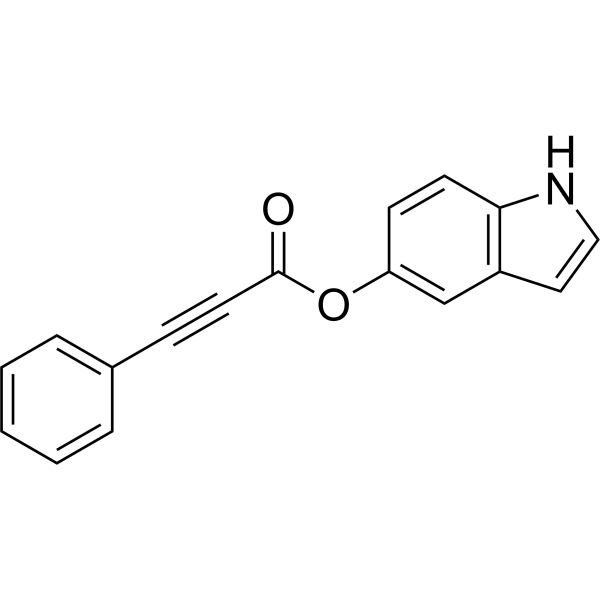
-
- HY-N1430
-
|
trans-Oxyresveratrol
|
Tyrosinase
HSV
Autophagy
|
Others
|
|
Oxyresveratrol (trans-Oxyresveratrol) is a potent naturally occurring antioxidant and free radical scavenger (IC50 of 28.9 µM against DPPH free radicals). Oxyresveratrol is potent and noncompetitive tyrosinase inhibitor with an IC50 value of 1.2 µM for mushroom tyrosinase. Oxyresveratrol is effective against HSV-1, HSV-2 and varicella-zoster virus, and has neuroprotective effects .
|
-
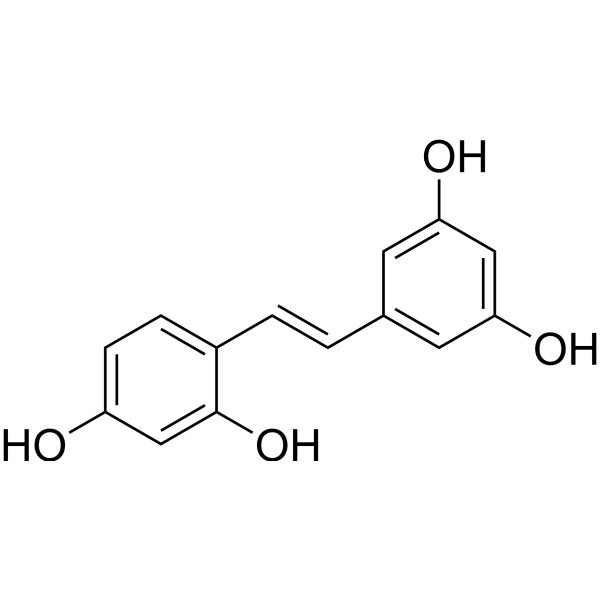
-
- HY-N10295
-
|
|
Aryl Hydrocarbon Receptor
|
Inflammation/Immunology
|
|
Flavipin is an aryl hydrocarbon receptor (Ahr) agonist that induces the expression of Ahr downstream genes in mouse CD4 + T cells and CD11b + macrophages. Flavipin inhibits the stabilizing function of Arid5a on Il23a 3′UTR, a newly identified target mRNA . Flavipin exhibits the DPPH free radical scavenging ability with IC50 value of 7.2 μM, and has potent α-glucosidase inhibition with IC50 value of 33.8 μM .
|
-
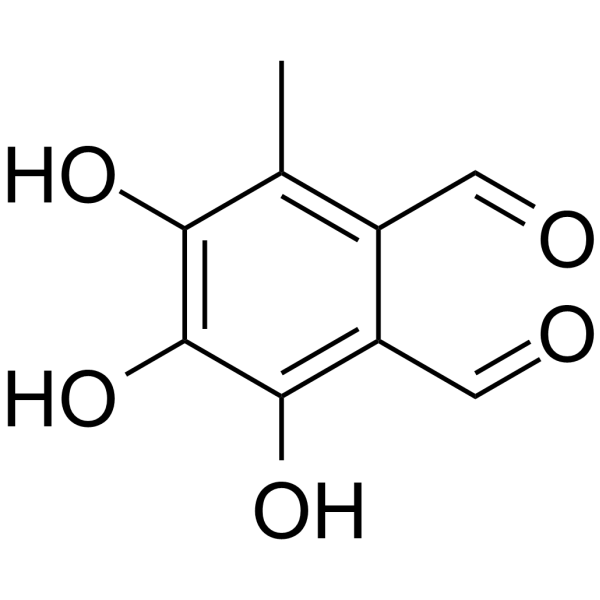
-
- HY-N10770
-
|
|
Others
|
Metabolic Disease
|
|
5'-Geranyl-5,7,2',4'-tetrahydroxyflavone, a phenolic compound, presents strong oxygen radical absorbance capacity (ORAC), DPPH radical-scavenging capacity, ABTS radical-scavenging capacity, ferric reducing antioxidant power (FRAP) and nitrite-scavenging capacity. 5'-Geranyl-5,7,2',4'-tetrahydroxyflavone has the potential for natural antioxidant research .
|
-
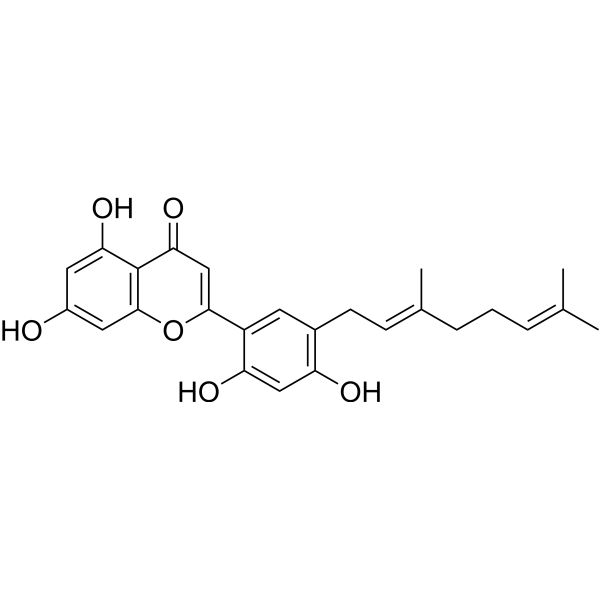
-
- HY-149340
-
|
|
Cholinesterase (ChE)
|
Neurological Disease
|
|
PD07 is an orally active AChE inhibitor (IC50: 0.29 μM for hAChE). PD07 also inhibits ChEs, BACE1 (IC50: 13.42 μM), and Aβ1–42 aggregation in in vitro. PD07 is an antioxidant, and shows DPPH inhibitory activity (IC50: 26.46 μM). PD07 improves memory and cognition in Scopolamine (HY-N0296)-induced amnesia rats. PD07 can be used for research of Alzheimer’s disease .
|
-
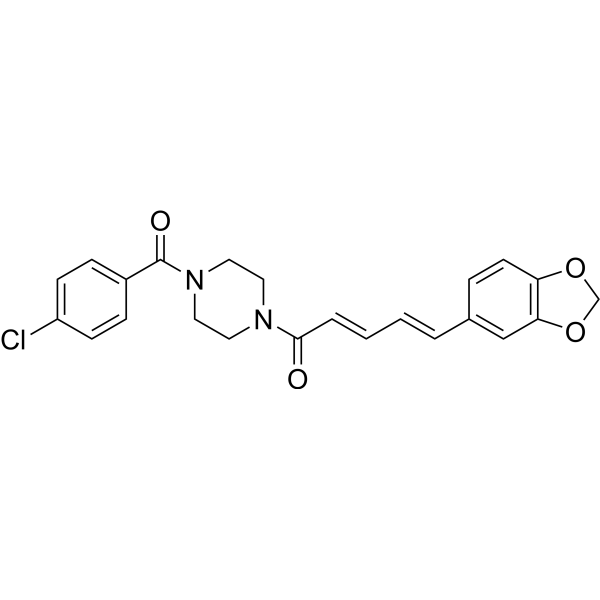
-
- HY-149390
-
|
|
TrxR
|
Cancer
|
|
TrxR1-IN-1 (Compound 5j) is a TrxR1 inhibitor (IC50: 8.8 μM). TrxR1-IN-1 has anticancer activity, with IC50s of MCF-7 (1.5 μM), HeLa (1.7 μM), BGC-823 (2.4 μM), SW-480 (2.8 μM), A549 (2.1 μM). TrxR1-IN-1 has antioxidant activity, and scavenges DPPH radical .
|
-
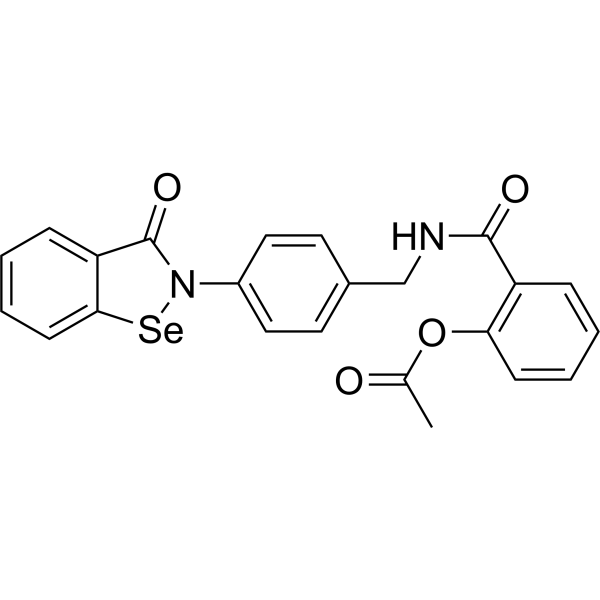
-
- HY-P1934A
-
|
|
Fungal
IFNAR
Reactive Oxygen Species
|
Infection
Inflammation/Immunology
Cancer
|
|
Cyclo(L-Phe-L-Pro), isolated from Pseudomonas fluorescens and Pseudomonas alcaligenes cell-free culture supernatants is an antifungal cyclic dipeptide . Cyclo(L-Phe-L-Pro) inhibits IFN-β production by interfering with retinoic-acid-inducible gene-I (RIG-I) activation . Cyclo(L-Phe-L-Pro) exhibits free-radical scavenging activity with the IC50 of 24 µM in the DPPH assay .
|
-
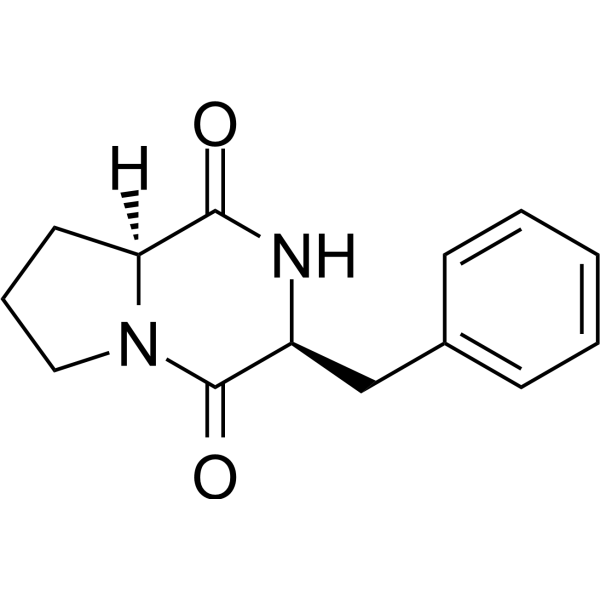
-
- HY-N11997
-
|
|
Cholinesterase (ChE)
|
Neurological Disease
|
|
Feralolide is a dihydroisocoumarin isolated from the methanolic extract of aloe vera resin. Feralolide is also a dual inhibitor of AChE and BuChE, with IC50s of 55 μg/mL and 52 μg/mL respectively. Feralolide has antioxidant activity and inhibits 2,2-diphenyl-1-picrylhydrazyl (DPPH) and 2, 2′-azinobis-3-ethylbenzothiazoline-6-sulfonic acid (ABTS). Feralolide could be used in research into cognitive disorders such as Alzheimer's disease, potentially restoring and enhancing memory .
|
-
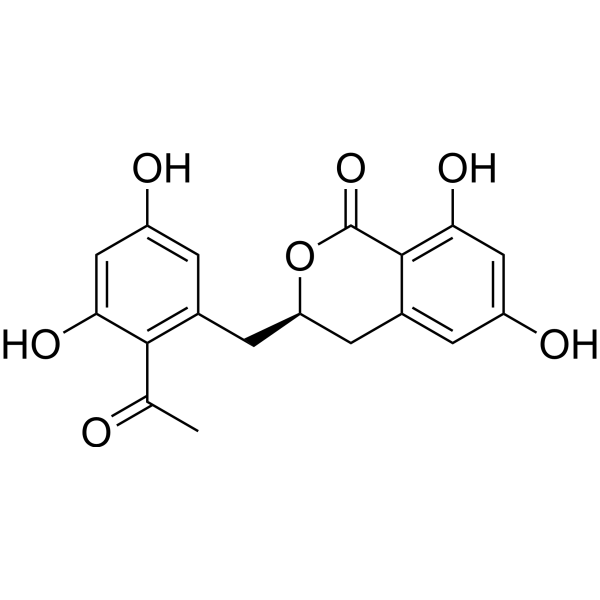
-
- HY-N9283
-
|
|
Reactive Oxygen Species
|
Neurological Disease
Cancer
|
|
1,2-Diacetoxy-4,7,8-trihydroxy-3-(4-hydroxyphenyl)dibenzofuran, isolated from the edible mushroom Sarcodon leucopus, has antioxidant effects in the DPPH scavenging assay with the IC50 of 28 μM, inhibits malondialdehyde (MDA) with the IC50 of 71 μM, and inhibits α-glucosidase with the IC50 of 6.22 μM .
|
-
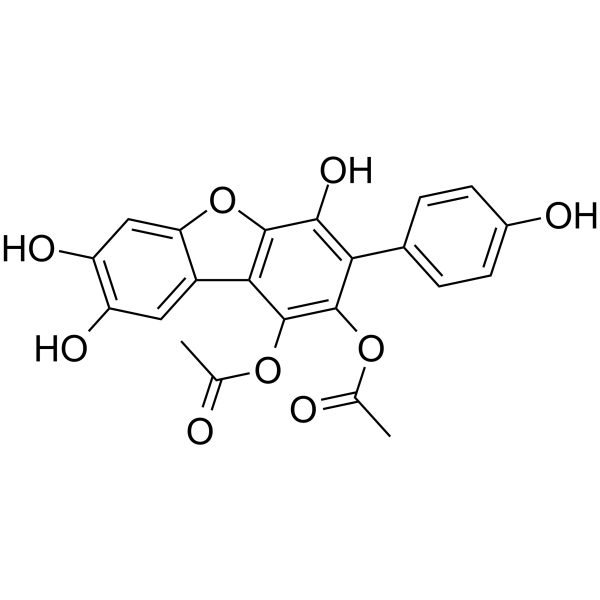
-
- HY-121153
-
|
Alutenusin
|
FXR
|
Others
|
|
Altenusin shows markedly DPPH radical scavenging activities.
|
-
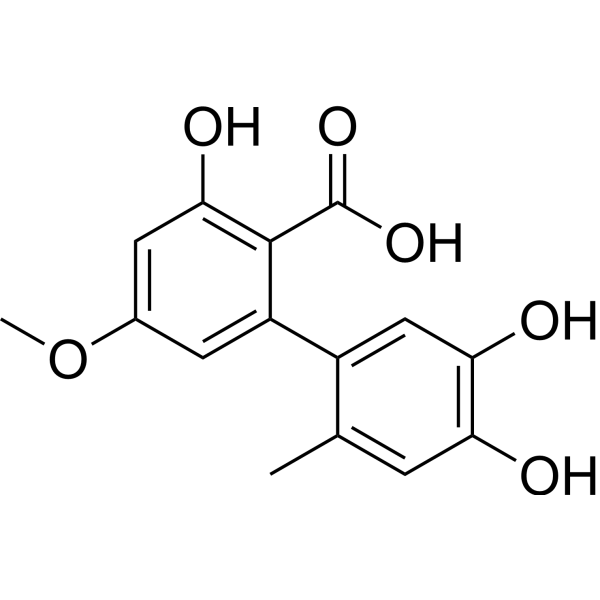
-
- HY-N9814
-
|
|
NO Synthase
|
Inflammation/Immunology
|
|
Shanciol B, isolated from the ethyl acetate extract of the air-dried whole plant of Pholidota imbricate Hook, inhibits nitric oxide (NO) production and 1,1-diphenyl-2-picrylhydrazil (DPPH) radical scavenging activity . Shanciol B is a microsomal prostaglandin E synthase-1 (mPGES-1) inhibitor with anti-inflammatory activity .
|
-
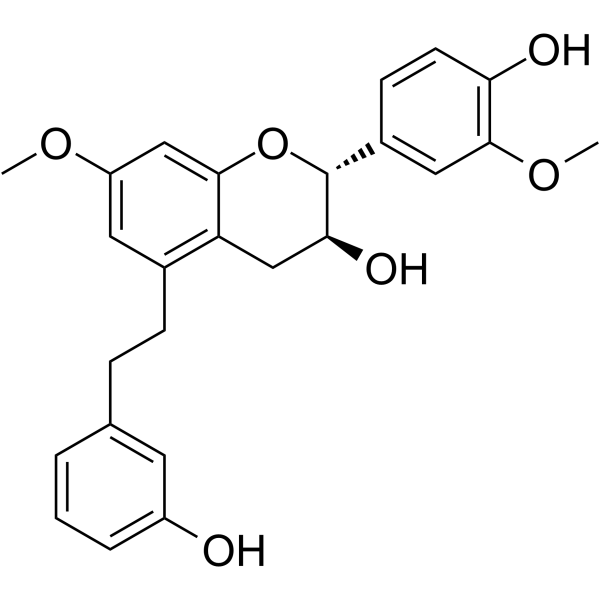
-
- HY-146172
-
|
|
Reactive Oxygen Species
|
Inflammation/Immunology
Cancer
|
|
Antioxidant agent-3 (Compound 14q), an potent antioxidant, displays potent DPPH radicals scavenging activity and ABTS + scavenging activity with IC50s of 26.58 and 30.31 μM, respectively. Antioxidant agent-3 (Compound 14q) increases reactive oxygen species (ROS), superoxide dismutase (SOD) and glutathione (GSH), and reduced lactate dehydrogenase (LDH) in H2O2-treated HepG2 cells .
|
-
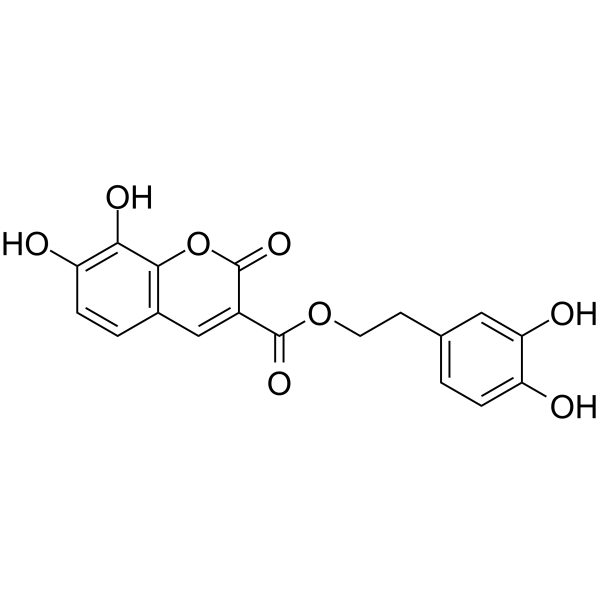
- HY-W018643A
-
|
Methyl (E)-ferulate
|
Others
|
Others
|
|
(E)-Ferulic acid methyl ester (Methyl (E)-ferulate) exhibits strong DPPH and ABTS + radical scavenging activities .
|
-

- HY-N3424
-
-
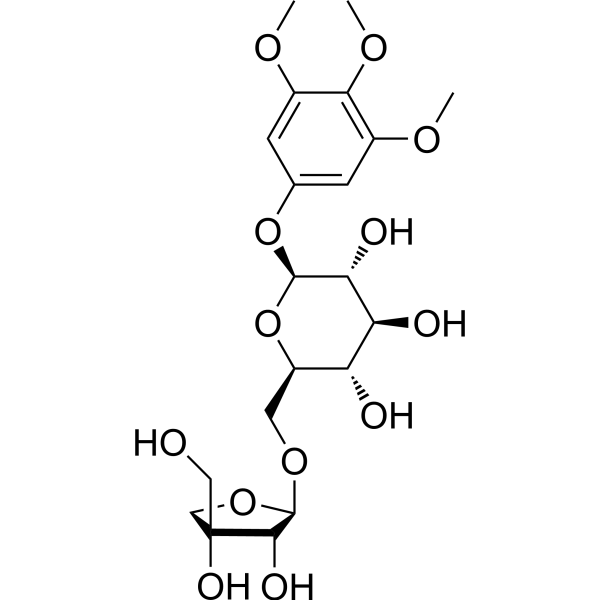
- HY-N6043
-
|
|
Others
|
Inflammation/Immunology
|
|
Hydroxytyrosol acetate is found in the olive oil with an antioxidant activity. Hydroxytyrosol acetate had a weaker DPPH radical scavenging activity than hydroxytyrosol .
|
-
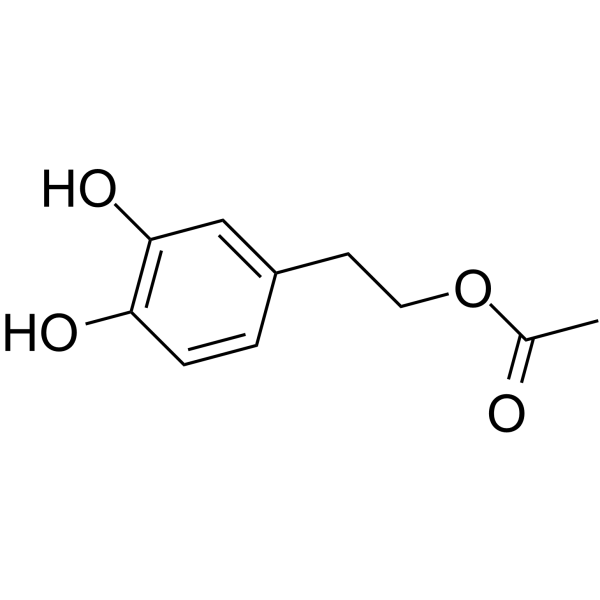
- HY-133965
-
-

- HY-N6672
-
|
|
Others
|
Inflammation/Immunology
|
|
Caulophylline B is a fluorenone alkaloid isolated from the roots of Caulophyllum robustum Maxim, affords a low scavenging effect against DPPH radical .
|
-
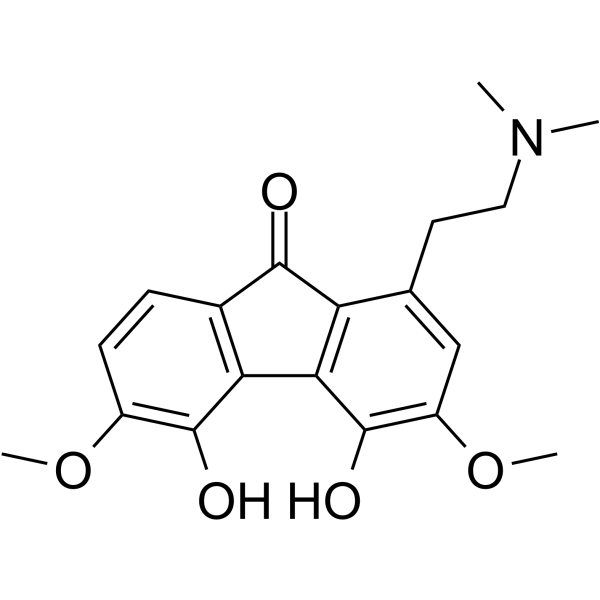
- HY-N7931
-
-
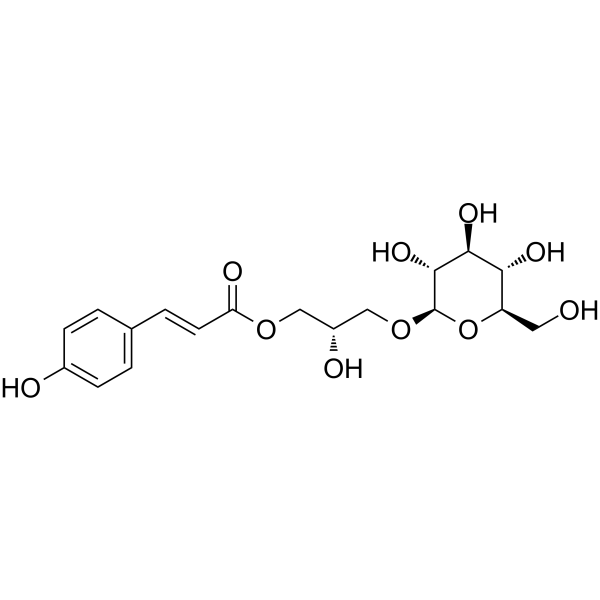
- HY-N11655
-
|
|
Others
|
Others
|
|
Antioxidant agent-10 (Compound 3) is an antioxidant agent that exhibits moderate DPPH scavenging activity with an EC50 of 33.2 μg/mL .
|
-
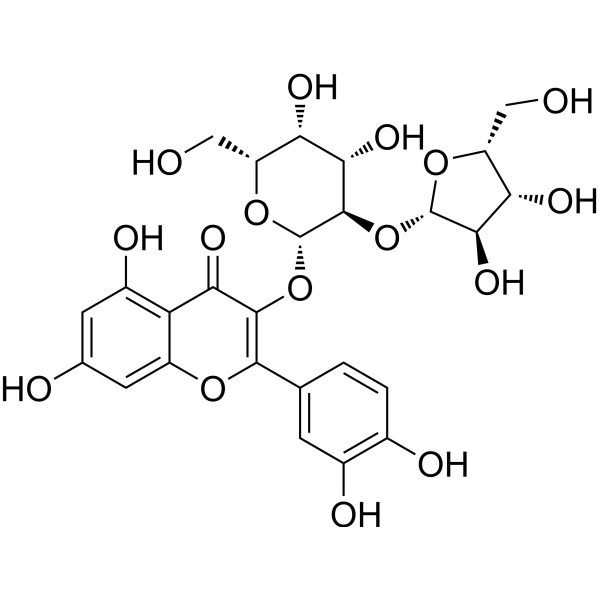
- HY-133183
-
|
|
Others
|
Others
|
|
Urolignoside is an antioxidant with free radical scavenging activity. Urolignoside potently scavenges DPPH radical, and exhibits antioxidant to β-carotene-lineoleate model .
|
-
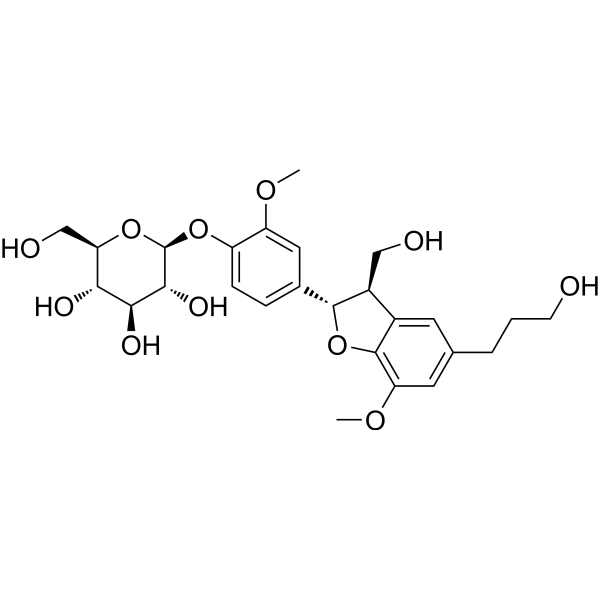
- HY-N7904
-
|
|
Others
|
Others
|
|
Laricitrin 3-O-glucoside is an antioxidant agent. Laricitrin 3-O-glucoside correlates significantly with DPPH assay and CUPRAC assay .
|
-

- HY-N8169
-
|
|
Others
|
Others
|
|
10-O-Trans-p-methoxycinnamoylcatalpol has antioxidant activity with the IC50 value of 0.37 μM/mL in DPPH free radical scavenging assay .
|
-
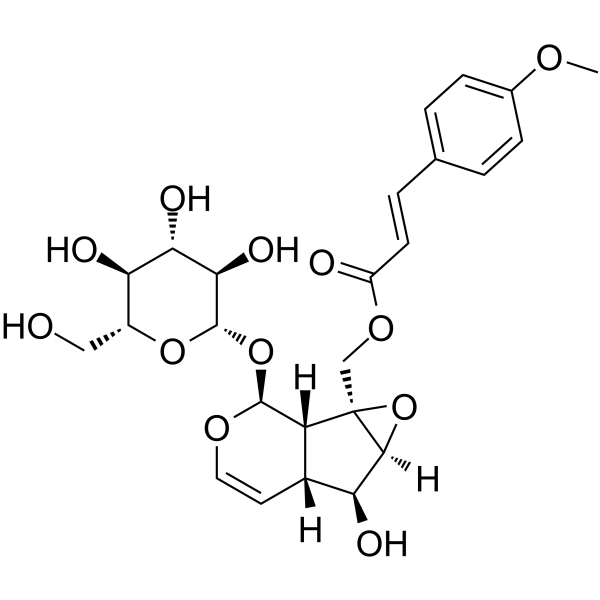
- HY-N9447
-
-
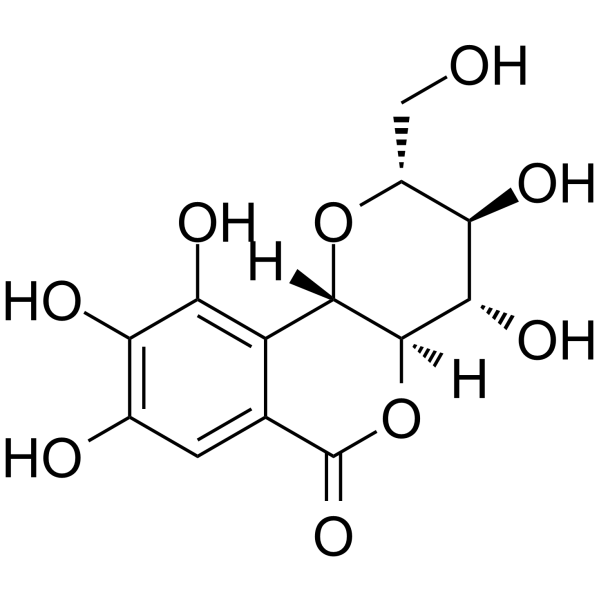
- HY-157123
-
|
|
Tyrosinase
|
Others
|
Tyrosinase-IN-18 (compound 6) is a potent tyrosinase inhibitor. Tyrosinase-IN-18 has strong antioxidant activities against ROS, ABTS+, and DPPH radicals .
|
-
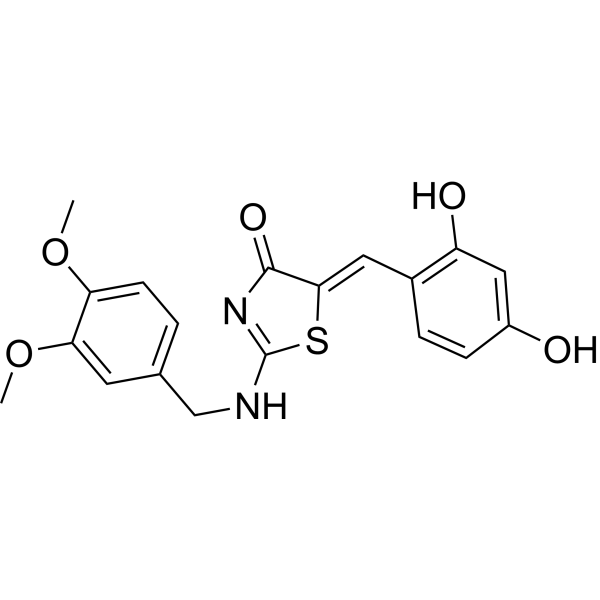
- HY-N4111
-
|
|
Others
|
Inflammation/Immunology
Cancer
|
|
Wushanicaritin exhibits significant antioxidant activity (IC50=35.3 μM) in DPPH radical scavenging activity tests. Antitumor effects and anti-inflammatory property .
|
-
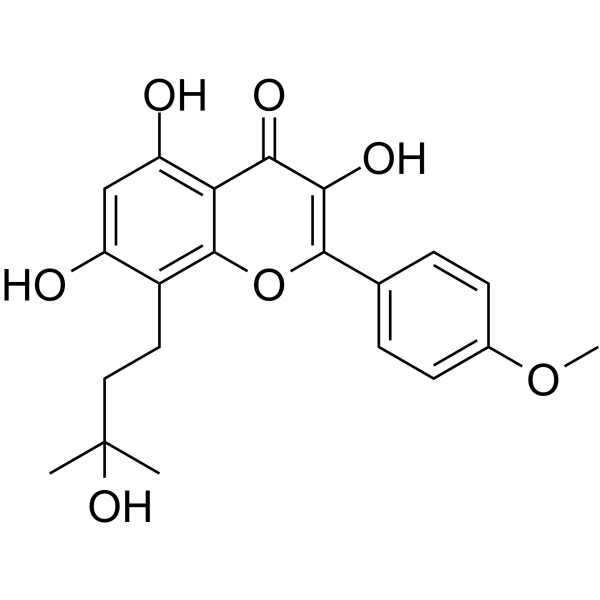
- HY-N11469
-
|
|
Others
|
Others
|
|
Cyclobisdemethoxycurcumin is an antioxidant agent with IC50s of ~250 μM and 15-20 μM in DPPH radical scavenging assay and 2-DR oxidation assay, respectively .
|
-

- HY-N1205
-
|
|
|
|
|
Spathulenol is isolated from Aristolochia yunnanensis, and has antioxidant, anti-inflammatory, antiproliferative and antimycobacterial activities. Spathulenol shows a high antioxidant activity with an IC50 of 85.60 μg/mL in the DPPH system [1].
|
-
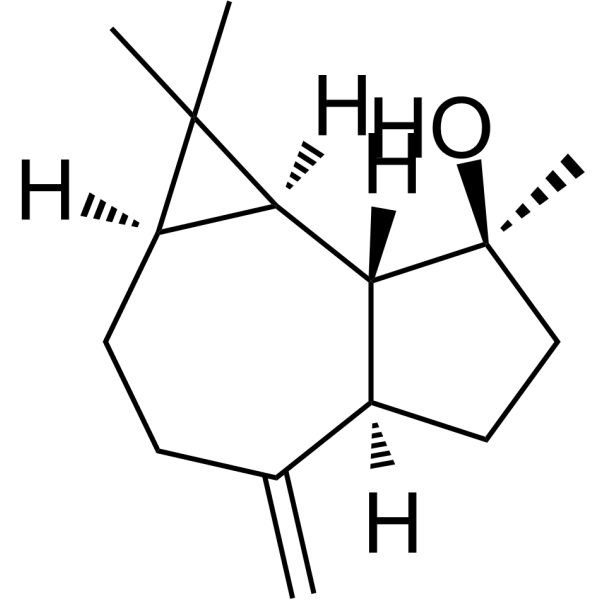
- HY-N9368
-
|
|
Others
|
Others
|
|
Luteolin-7-O-α-L-arabinopyranosyl (1→6)-β-D-glucopyranoside is a flavonoid with antiradical activity .
|
-
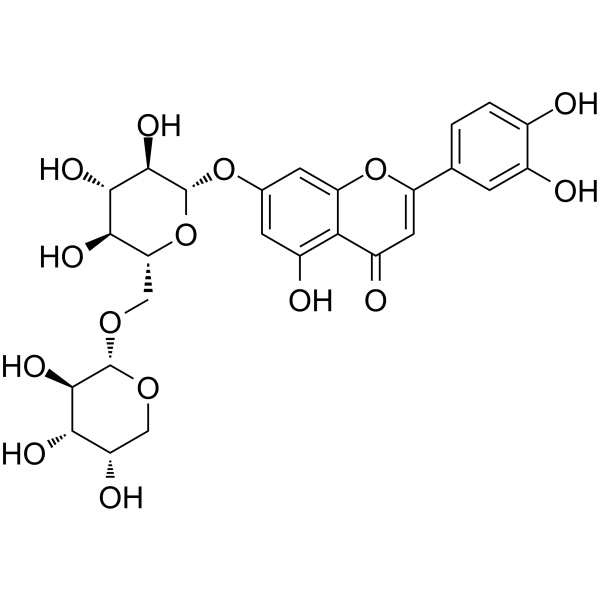
- HY-W274194
-
|
|
Others
|
Others
|
|
Antioxidant agent-7 (SD-7) is a benzodiazepine derivative with antioxidant activity with an IC50 value of 470 nM to scavenge DPPH (2,2-diphenyl-1-picrylhydrazyl) free radical .
|
-
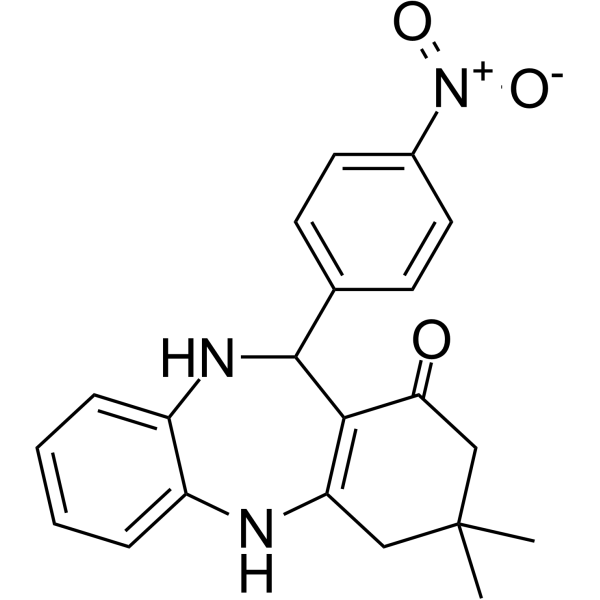
- HY-N4046
-
|
n-Hexacosyl trans-ferulate
|
Others
|
Others
|
|
Hexacosyl (E)-ferulate (n-Hexacosyl trans-ferulate) is an antioxidant agent that displays significant antioxidant activity in the DPPH (HY-112053) assay with the RC50 (50% reduction concentration) of 0.0976 mg/mL .
|
-
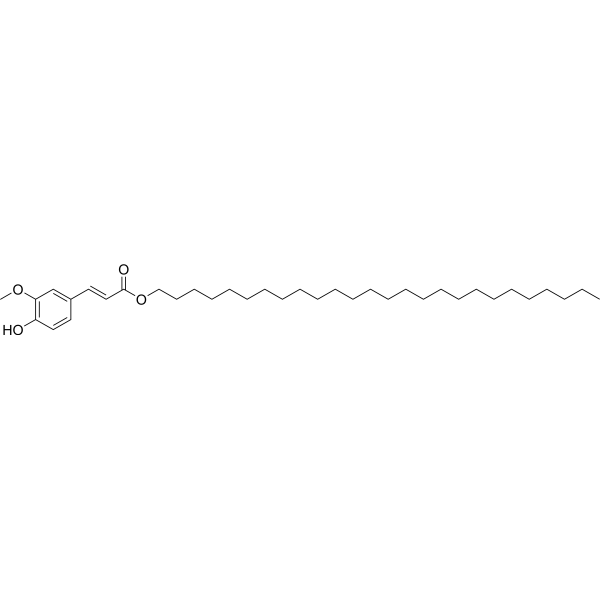
- HY-N1353
-
|
|
|
|
|
Rhamnocitrin is a flavonoid isolated from astragalus complanatus R. Br. (Sha-yuan-zi) . Rhamnocitrin is a scavenger of DPPH with an IC50 of 28.38 mM. Rhamnocitrin has anti-oxidant, anti-inflammatory and an-tiatherosclerosis activity .
|
-
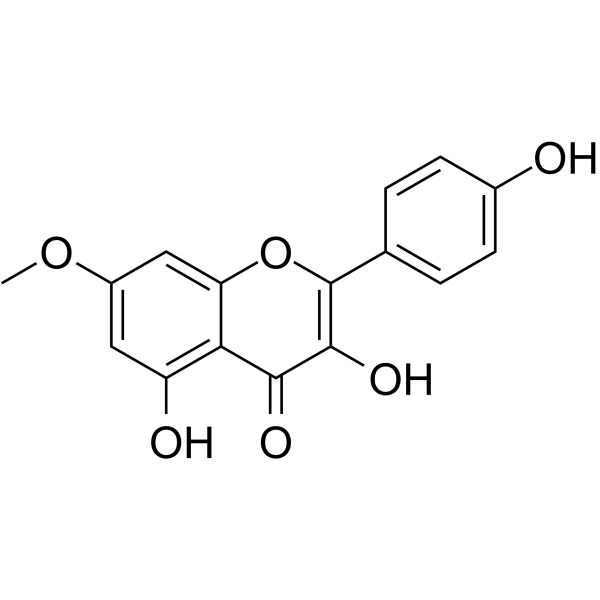
- HY-N1417
-
Sesamol
1 Publications Verification
|
|
|
|
Sesamol is a constituent of sesame oil. Sesamol shows a free radical scavenging activity. Sesamol shows an IC50=5.95±0.56 μg/mL in the DPPH assay. Anti-oxidant activities . Anticancer activities .
|
-
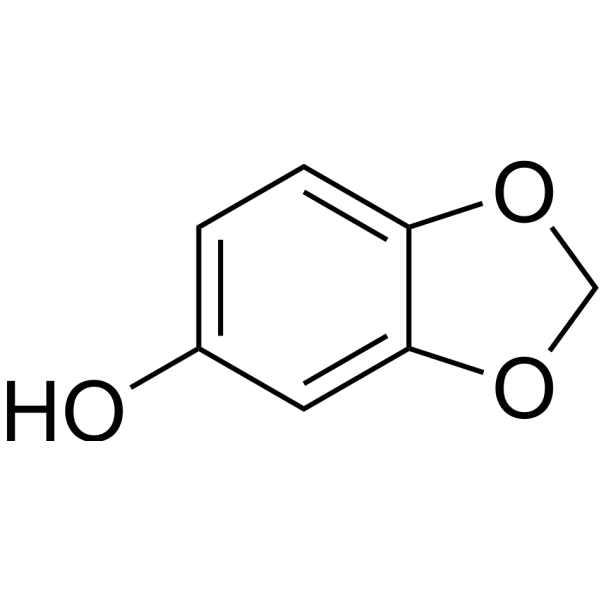
- HY-N8254
-
|
|
Others
|
Others
|
|
Haginin A (compound 3)can be isolated from the EtOAc fraction of Lespedeza cyrtobotrya. Haginin A has radical scavenging activity with IC50 values of 9.0 μM and 37.7 μM in the ABTS system and DPPH system, respectively .
|
-
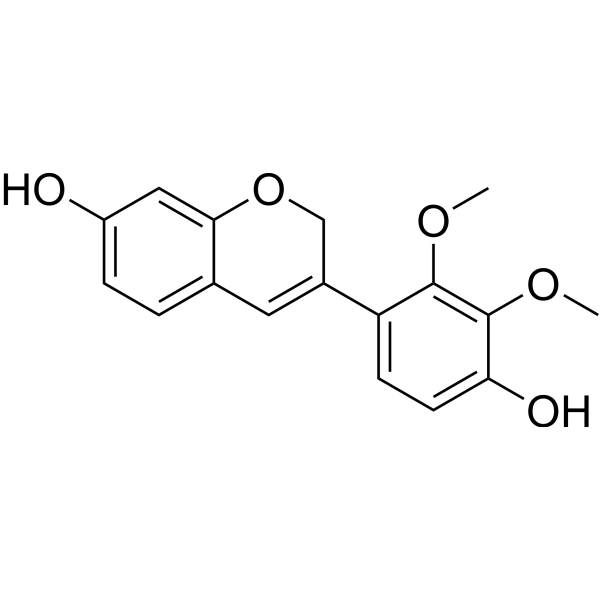
- HY-157124
-
|
|
Tyrosinase
|
Metabolic Disease
|
Tyrosinase-IN-19 (compound 9) is a competitive tyrosinase inhibitor. Tyrosinase-IN-19 has strong antioxidant activities against ROS, ABTS+, and DPPH radicals. Tyrosinase-IN-19 suppresses tyrosinase expression in a dose-dependent manner .
|
-

- HY-162173
-
|
|
COX
|
Inflammation/Immunology
|
|
WYZ90 ((compound 6a) is a potent and selective COX-2 inhibitor with IC50 values of 75, 5734, 19940 nM for COX-2, COX-1 and DPPH, respectively. WYZ90 shows antioxidant and analgesic activity .
|
-
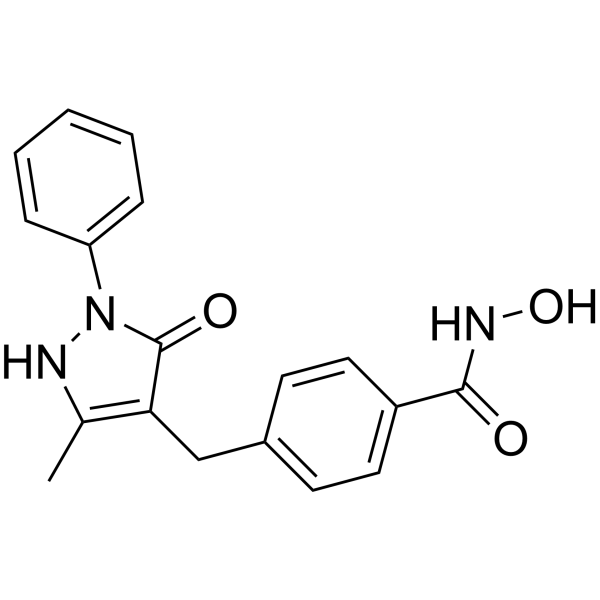
- HY-113121S1
-
|
|
Isotope-Labeled Compounds
Endogenous Metabolite
|
Cardiovascular Disease
|
|
Vanillylmandelic acid-d is the deuterium labeled Vanillylmandelic acid. Vanillylmandelic acid is the endproduct of epinephrine and norepinephrine metabolism. Vanillylmandelic acid can be used as an indication of the disorder in neurotransmitter metabolism as well. Vanillylmandelic acid has antioxidant activity towards DPPH radical with an IC50 value of 33 μM[1].
|
-
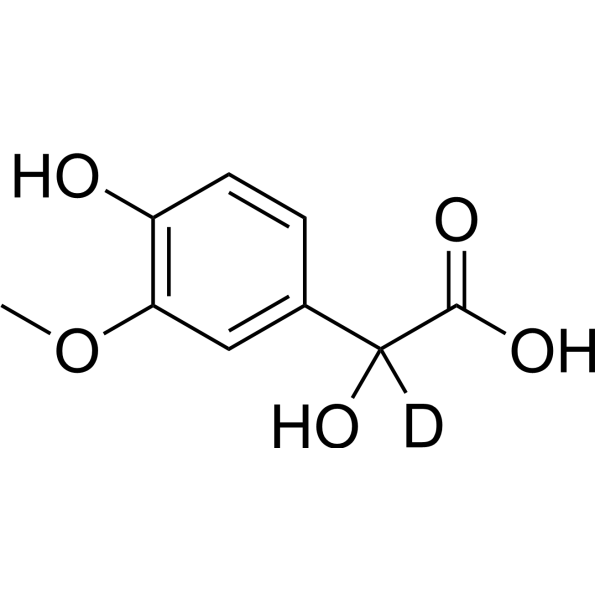
- HY-W714006
-
|
|
Others
|
Metabolic Disease
|
|
Cochliodinol (compound 1) is a metabolite derived from the Apis mellifera ligustica. Cochliodinol has strong free radical scavenging activity of 2, 2-diphenyl-1-picrohydrazine (DPPH) (IC50=3.06 μg/mL) .
|
-

- HY-N12443
-
|
|
Others
|
Inflammation/Immunology
|
|
Antioxidant agent-18 (compound 5) is a flavonol glycoside with antioxidant activity isolated from Ginkgo biloba. Antioxidant agent-18 scavenges DPPH radicals (IC50: 15.8 μM) and reduces cytochrome c (IC50: 14.7 μM).
|
-
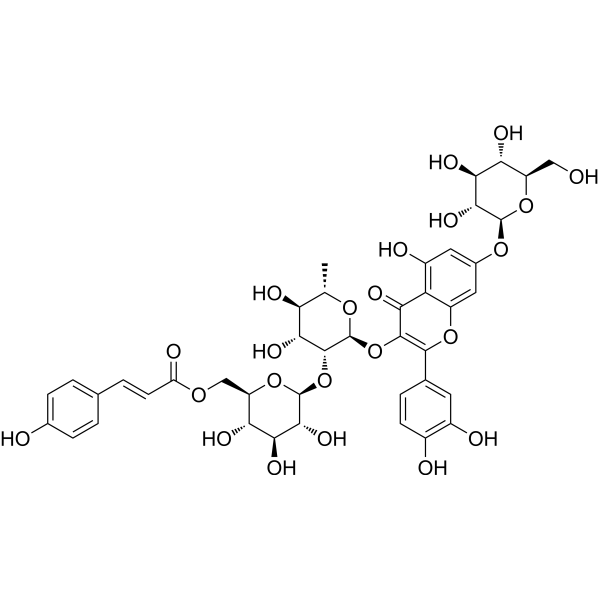
- HY-N1994
-
|
|
|
|
|
Swertianine is a hydroxyexanthone that can be isolated from Swertia decussata. Swertianine has antioxidant activity by inhibiting lipid peroxidation, scavenging DPPH and superoxide free radicals. Swertianine also inhibits γ-ray induced DNA damage of pBR322 with protective effect .
|
-
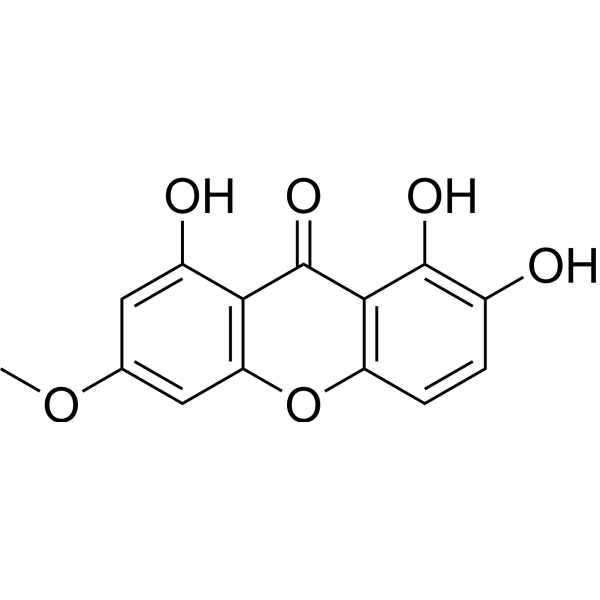
- HY-113121S
-
|
|
Endogenous Metabolite
|
Cardiovascular Disease
|
|
Vanillylmandelic acid-d3 is the deuterium labeled Vanillylmandelic acid. Vanillylmandelic acid is the endproduct of epinephrine and norepinephrine metabolism. Vanillylmandelic acid can be used as an indication of the disorder in neurotransmitter metabolism as well. Vanillylmandelic acid has antioxidant activity towards DPPH radical with an IC50 value of 33 μM[1].
|
-
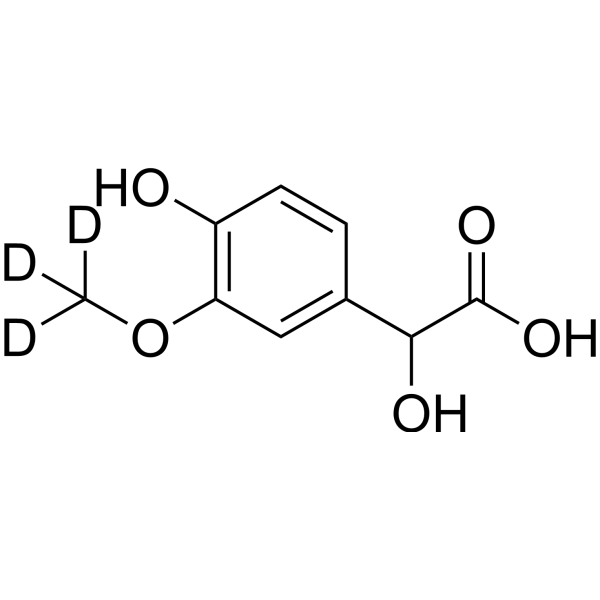
- HY-113121R
-
|
|
Drug Metabolite
Endogenous Metabolite
|
Cardiovascular Disease
|
|
Vanillylmandelic acid (Standard) is the analytical standard of Vanillylmandelic acid. This product is intended for research and analytical applications. Vanillylmandelic acid is the endproduct of epinephrine and norepinephrine metabolism. Vanillylmandelic acid can be used as an indication of the disorder in neurotransmitter metabolism as well. Vanillylmandelic acid has antioxidant activity towards DPPH radical with an IC50 value of 33 μM .
|
-
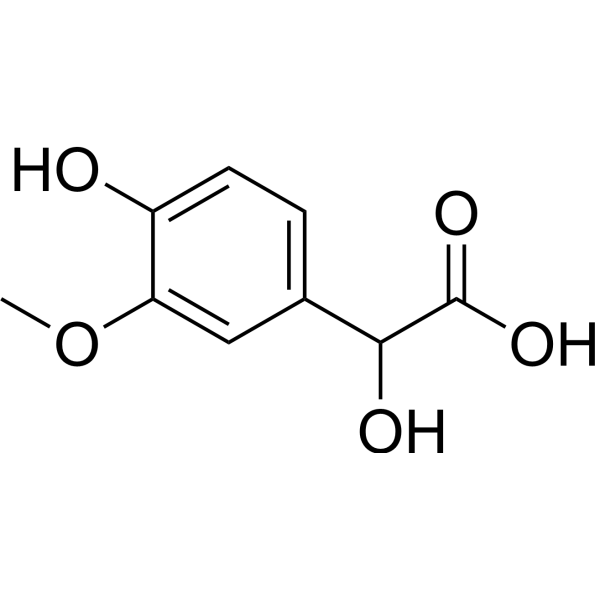
- HY-N5130
-
|
|
Others
|
Neurological Disease
|
|
Effusol, a phenolic constituent from Juncus effuses, exhibits potent scavenging activity for DPPH and ABTS radicals, with IC50 values of 79 μM and 2.73 μM, respectively. Effusol rescues CA1 LTP attenuated by corticosterone, defending the hippocampal function against stress-induced cognitive decline .
|
-

- HY-14550
-
-
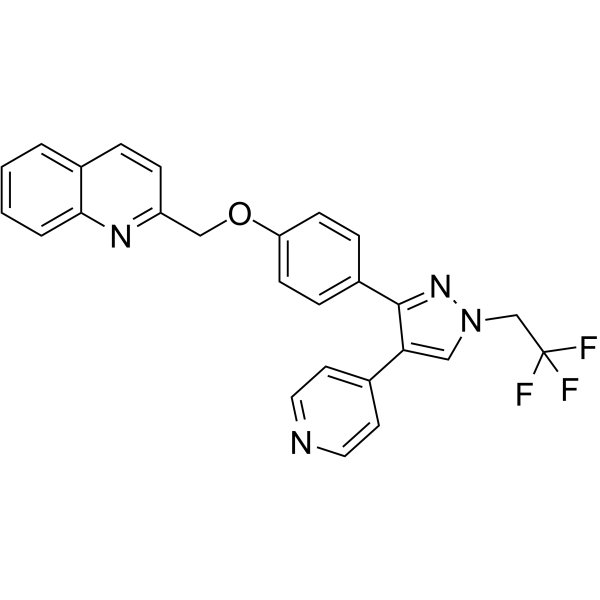
- HY-N0539
-
|
|
Aldose Reductase
|
Cancer
|
|
Calceolarioside B is a natural product isolated from Akebia quinata leaves. Calceolarioside B exhibits significant inhibitory activity against rat lens aldose reductase (RLAR) with an IC50 of 23.99 μM. Calceolarioside B displays inhibitory effect on DPPH radical scavenging activity with an IC50 of 94.60 μM .
|
-

- HY-136593
-
|
(S)-3-(4-Hydroxyphenyl)lactic acid
|
Others
|
Others
|
|
(S)-3-(4-Hydroxyphenyl)-2-hydroxypropionic acid (compound 1) is a metabolite isolated from the culture medium of Leuconostoc mesenteroides. (S)-3-(4-Hydroxyphenyl)-2-hydroxypropionic acid has high DPPH radical-scavenging activities and antioxidative activities .
|
-
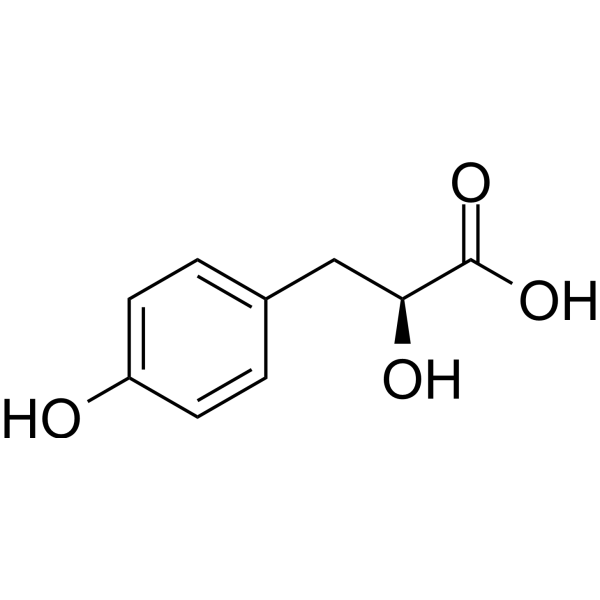
- HY-N7648
-
|
Atherospermine
|
Parasite
|
Infection
|
|
Atherosperminine(Atherospermine)is a nature occurring alkaloid, has antiplasmodial activities in vitro, with an IC50 of 5.80 μM. Atherosperminine is a good reductant with the ability to chelate metals. Atherosperminine has scavenging activity towards the free radical DPPH, with an IC50 of 29.56 µg/mL. Atherosperminine exerts a non-specific relaxant effect on the trachealis .
|
-
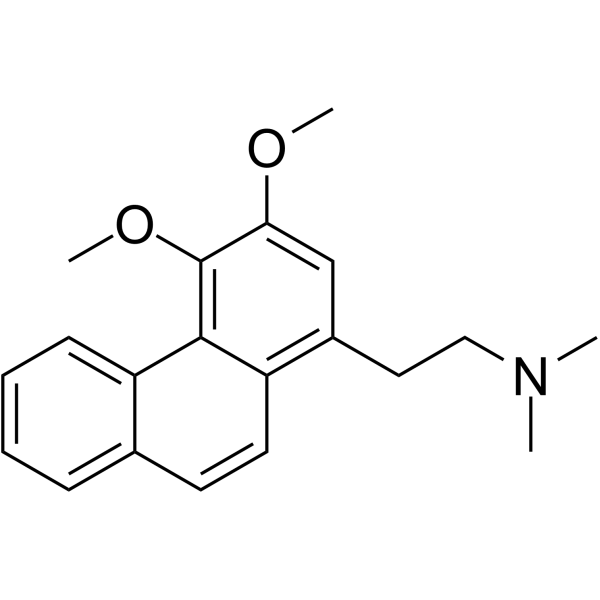
- HY-120315
-
|
|
Bacterial
|
Infection
|
|
Nyssoside, a ellagic acid derivative, has significant antioxidant activity and shows antibacterial activity against different pathogenic bacteria .
|
-
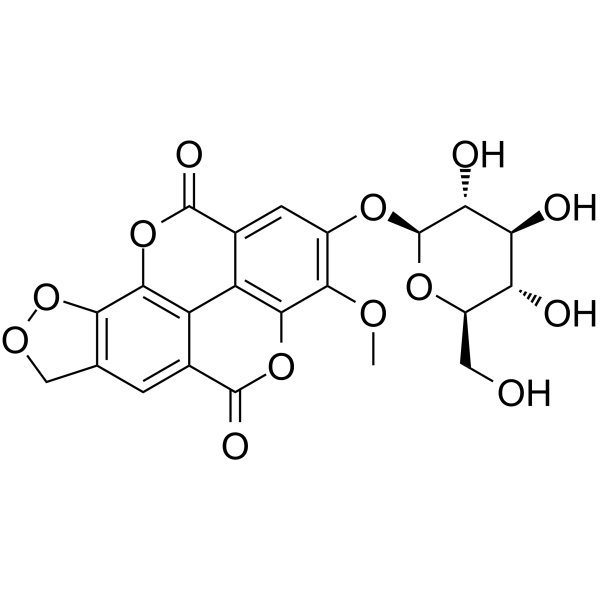
- HY-N8678
-
-
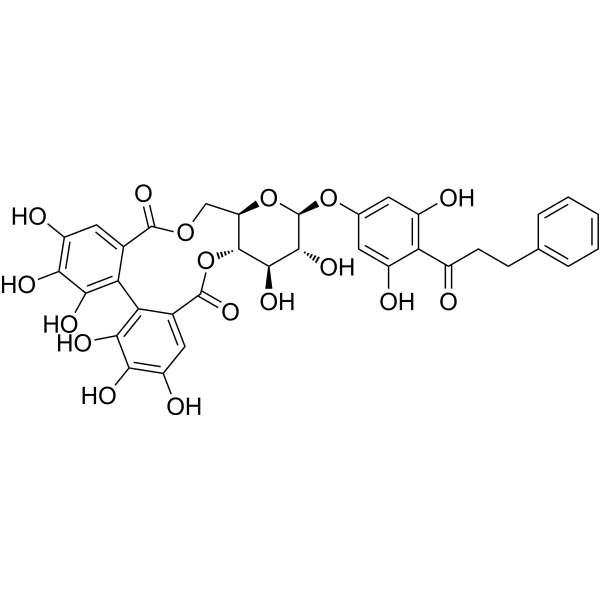
- HY-119186
-
-

- HY-155621
-
|
|
Cholinesterase (ChE)
|
Neurological Disease
|
|
PD24 is an AChE and BuChE inhibitor (hAChE IC50: 1.72 μM; eeAChE IC50: 1.76 μM; eqBuChE IC50: 2.64 μM). PD24 also has antioxidant activity, and inhibits DPPH (IC50: 28.72 μM). PD24 can be used for research of Alzheimer’s disease .
|
-
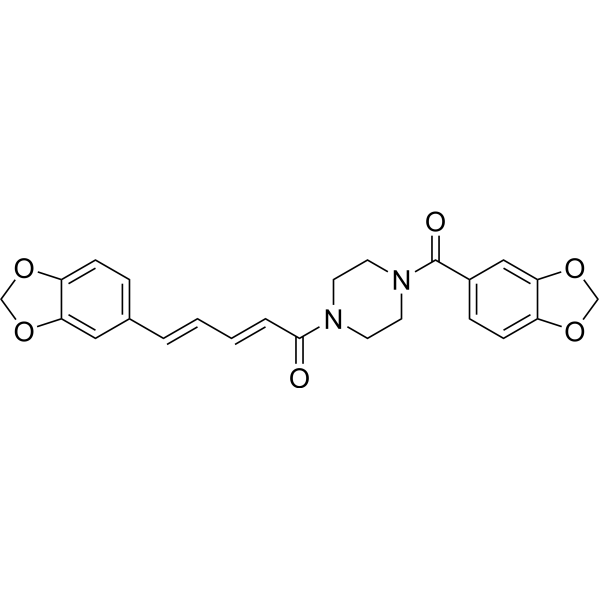
- HY-155622
-
|
|
Cholinesterase (ChE)
|
Neurological Disease
|
|
PD25 is an AChE and BuChE inhibitor (hAChE IC50: 1.58 μM; eeAChE IC50: 1.63 μM; eqBuChE IC50: 2.39 μM). PD25 also has antioxidant activity, and inhibits DPPH (IC50: 29.55 μM). PD25 can be used for research of Alzheimer’s disease .
|
-
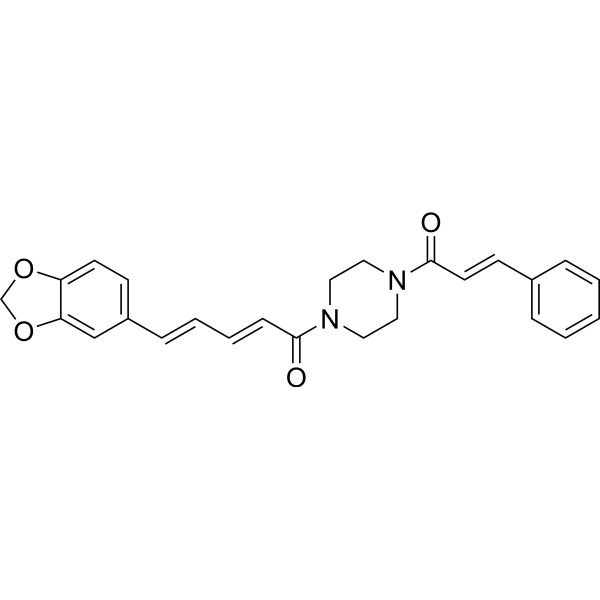
- HY-N0828
-
|
|
Autophagy
|
Inflammation/Immunology
Cancer
|
|
Pterostilbene is a stilbenoid isolated from blueberries and Pterocarpus marsupium . Shows anti-oxidant, anti-inflammatory, anti-carcinogenic, anti-diabetic and anti-obesity properties . Pterostilbene blocks ROS production , also exhibits inhibitory activity against various free radicals such as DPPH, ABTS, hydroxyl, superoxide and hydrogen peroxide .
|
-
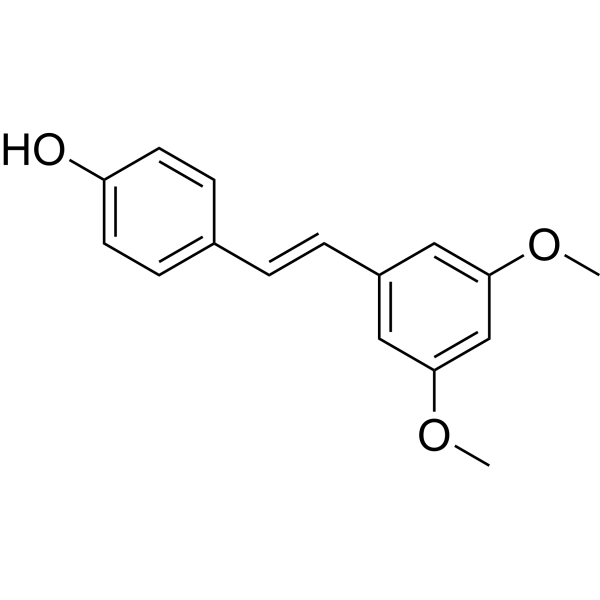
- HY-N3348
-
|
|
Fungal
|
Infection
Inflammation/Immunology
|
|
Lyoniside is a lignan glycoside with antioxidant, allelopathic and antifungal activities, which can be isolated from the rhizomes and stems of bilberry (Vaccinium myrtillus L.). Lyoniside exhibits radical scavenging properties with an IC50 value of 23 μg/mL in DPPH assay. Lyoniside inhibits the mycelial growth of Fusarium oxysporum and Mucor hiemalis at 50 μg/mL with inhibitory rates of 78% and 80%, respectively .
|
-
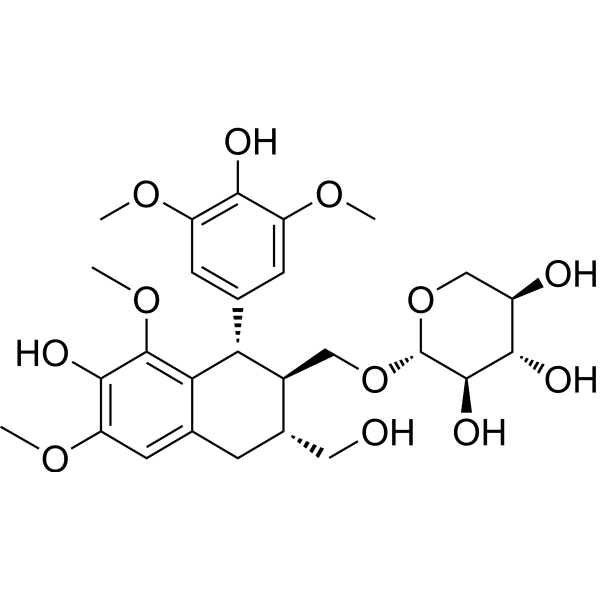
- HY-148134
-
|
|
Lipoxygenase
|
Inflammation/Immunology
|
|
5-LOX-IN-1 (compound 2b) is an inhibitor of human 5-Lipoxygenase (5-LOX) with an IC50 value of 2.3 μM. 5-LOX-IN-1 can be used for the research of inflammation .
|
-
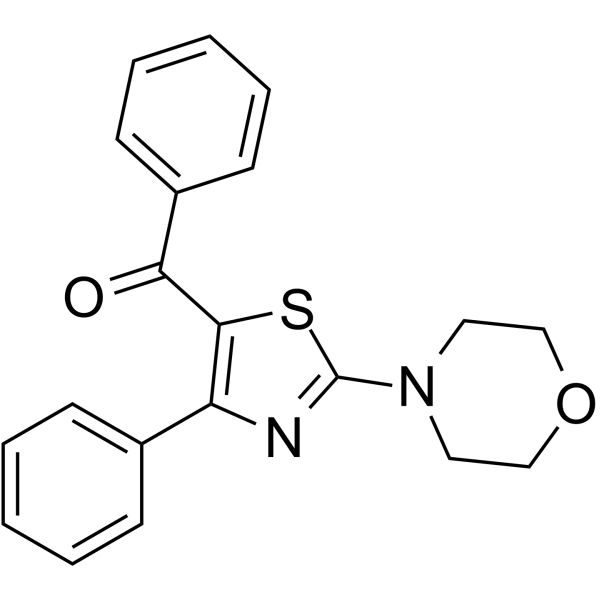
- HY-N0241
-
|
|
Cholinesterase (ChE)
|
Metabolic Disease
|
|
Rhodionin, isolated from the root of Rhodiola crenulata, is a specific non-competitive cytochrome P450 2D6 inhibitor with an IC50 of 0.761 μM and a Ki of 0.769 μM . Rhodionin exhibits potent, dose-dependent inhibitory effects on acetylcholinesterase (AChE) with IC50 ranged from 57.50 to 2.43 μg/mL . Rhodionin exhibits potent DPPH free radical scavenging activities, with an IC50 of 19.49 μM .
|
-
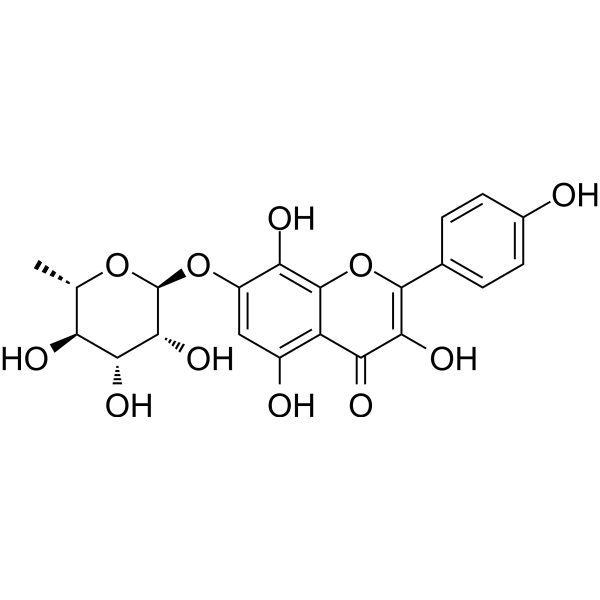
- HY-147870
-
-
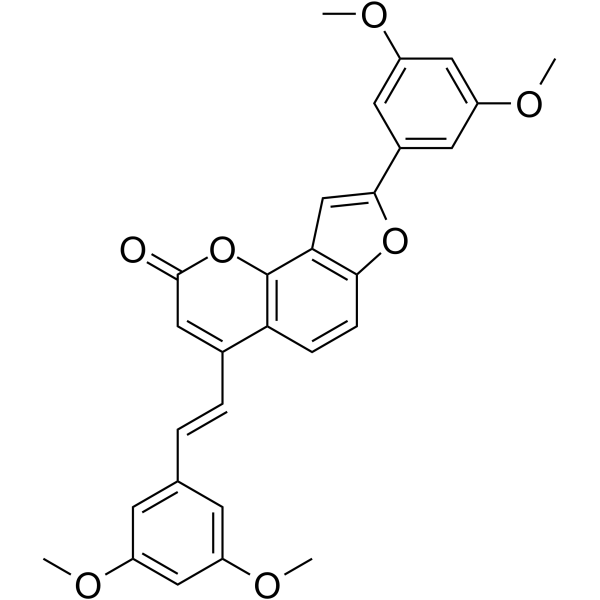
- HY-147851
-
|
|
Beta-secretase
|
Neurological Disease
|
|
BACE1-IN-12 (compound 7g) is a potent and BBB-penetrated BACE1 inhibitor, with an IC50 of 8.9 µM. BACE1-IN-12 shows selective BuChE (butyrylcholinesterase) inhibitory activity with an IC50 of 3.2 µM. BACE1-IN-12 shows effective antioxidant effect with an IC50 of 10.2 μM (DPPH). BACE1-IN-12 might be served as a potential anti-Alzheimer agent .
|
-
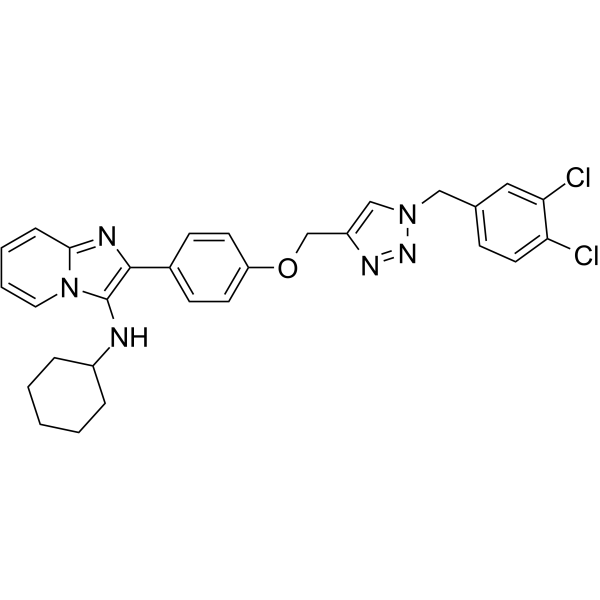
- HY-131803
-
|
|
Nucleoside Antimetabolite/Analog
|
Inflammation/Immunology
|
|
Urolignoside is an antioxidant with free radical scavenging activity. Urolignoside potently scavenges DPPH radical, and exhibits antioxidant to β-carotene-lineoleate model . 3'-Azido-3'-deoxyguanosine is a click chemistry reagent, it contains an Azide group and can undergo copper-catalyzed azide-alkyne cycloaddition reaction (CuAAc) with molecules containing Alkyne groups. Strain-promoted alkyne-azide cycloaddition (SPAAC) can also occur with molecules containing DBCO or BCN groups.
|
-
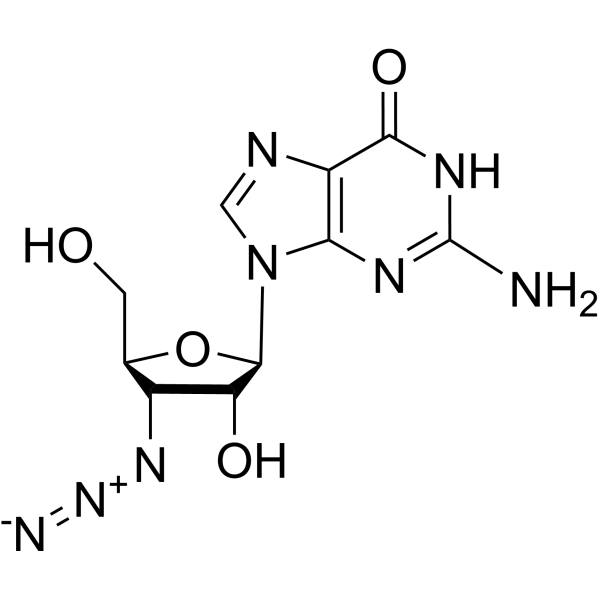
- HY-N2214
-
|
|
|
|
|
7-O-Methylaloeresin A is 5-methylchromone glycoside isolated from Commiphora socotrana (Burseraceae). 7-O-Methylaloeresin A exhibits good activity against multiple agent resistant Staphylococcus aureus (NCTC 11994) and Salmonella typhimurium (ATCC 1255) with MIC values of 0.72 and 0.18 mM, respectively. 7-O-Methylaloeresin A has antioxidant activities, gives IC50 values of 0.026 mM and 0.021 mM for DPPH and 2-deoxyribose degradation assay, respectively.
|
-
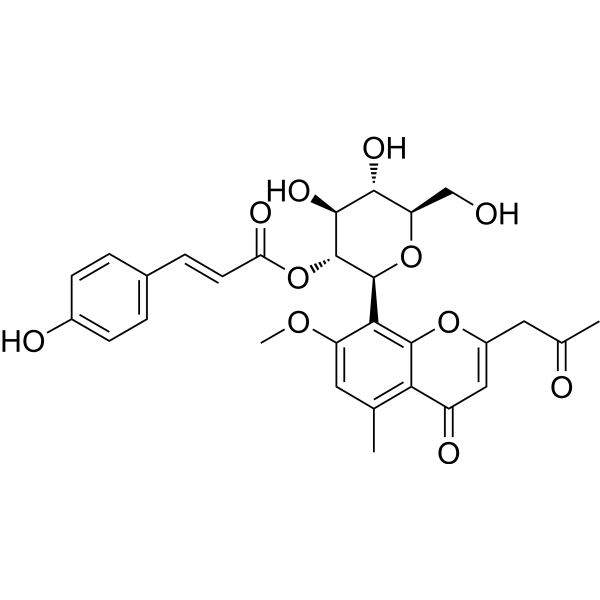
- HY-N7647
-
|
Brevifolincarboxylic acid methyl ester
|
Influenza Virus
|
Infection
Cardiovascular Disease
Inflammation/Immunology
|
|
Methyl brevifolincarboxylate (Brevifolincarboxylic acid methyl ester) is a potent influenza virus PB2 cap-binding inhibitor. Methyl brevifolincarboxylate has anti-oxidant activity. Methyl brevifolincarboxylate also inhibits platelet aggregation, lipid metabolism and inflammation .
|
-
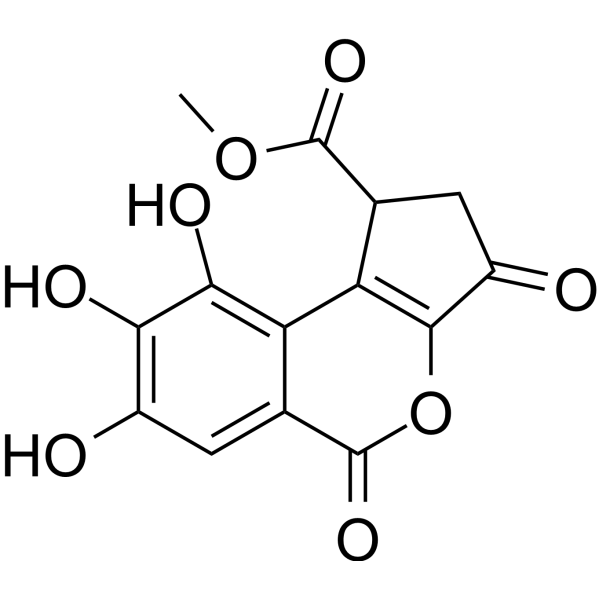
- HY-N3451
-
|
|
Lipoxygenase
|
Cancer
|
|
Isothymusin is a potent anti-oxidant agent. Isothymusin shows radical scavenging activities. Isothymusin shows anti-proliferative activities in cancer cell lines. Isothymusin inhibited the enzymes associated with the promotion stage of cancer, including cycloxygenase- 2 and lipoxygenase-5 .
|
-
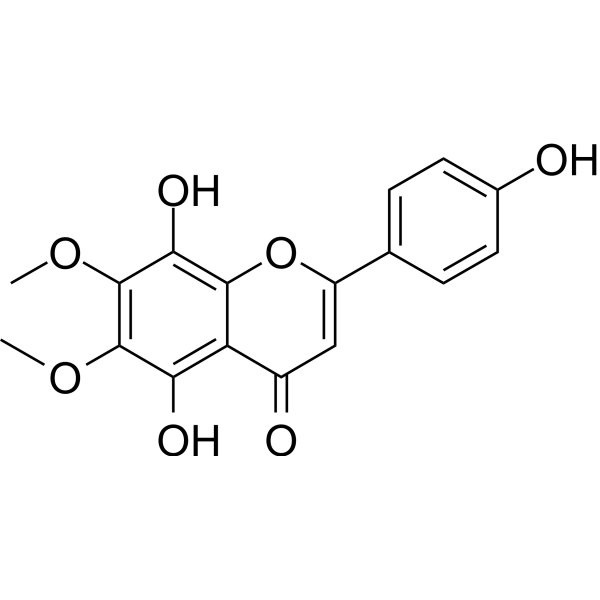
| Cat. No. |
Product Name |
Target |
Research Area |
-
- HY-P5316
-
|
|
Peptides
|
Inflammation/Immunology
|
|
MHLWAAK is an antioxidant active peptide that can be isolated from pancreatin hydrolysate of C-phycocyanin. MHLWAAK has high DPPH and ABTS radical scavenging ability. MHLWAAK protects zebrafish larvae from H2O2-induced oxidative damage .
|
-
- HY-P5317
-
|
|
Peptides
|
Inflammation/Immunology
|
|
MAQAAEYYR is an antioxidant active peptide that can be isolated from pancreatin hydrolysate of C-phycocyanin. MAQAAEYYR has high DPPH and ABTS radical scavenging ability. MAQAAEYYR protects zebrafish larvae from H2O2-induced oxidative damage .
|
-
- HY-P5318
-
|
|
Peptides
|
Inflammation/Immunology
|
|
MDYYFEER is an antioxidant active peptide that can be isolated from pancreatin hydrolysate of C-phycocyanin. MDYYFEER has high DPPH and ABTS radical scavenging ability. MDYYFEER protects zebrafish larvae from H2O2-induced oxidative damage .
|
-
- HY-P5316A
-
|
|
Peptides
|
Inflammation/Immunology
|
|
MHLWAAK TFA is an antioxidant active peptide that can be isolated from pancreatin hydrolysate of C-phycocyanin. MHLWAAK TFA has high DPPH and ABTS radical scavenging ability. MHLWAAK TFA protects zebrafish larvae from H2O2-induced oxidative damage .
|
-
- HY-P5317A
-
|
|
Peptides
|
Inflammation/Immunology
|
|
MAQAAEYYR TFA is an antioxidant active peptide that can be isolated from pancreatin hydrolysate of C-phycocyanin. MAQAAEYYR TFA has high DPPH and ABTS radical scavenging ability. MAQAAEYYR TFA protects zebrafish larvae from H2O2-induced oxidative damage .
|
-
- HY-P5318A
-
|
|
Peptides
|
Inflammation/Immunology
|
|
MDYYFEER TFA is an antioxidant active peptide that can be isolated from pancreatin hydrolysate of C-phycocyanin. MDYYFEER TFA has high DPPH and ABTS radical scavenging ability. MDYYFEER TFA protects zebrafish larvae from H2O2-induced oxidative damage .
|
-
- HY-P1934A
-
|
|
Fungal
IFNAR
Reactive Oxygen Species
|
Infection
Inflammation/Immunology
Cancer
|
|
Cyclo(L-Phe-L-Pro), isolated from Pseudomonas fluorescens and Pseudomonas alcaligenes cell-free culture supernatants is an antifungal cyclic dipeptide . Cyclo(L-Phe-L-Pro) inhibits IFN-β production by interfering with retinoic-acid-inducible gene-I (RIG-I) activation . Cyclo(L-Phe-L-Pro) exhibits free-radical scavenging activity with the IC50 of 24 µM in the DPPH assay .
|
| Cat. No. |
Product Name |
Category |
Target |
Chemical Structure |
-
- HY-N3141
-
-

-
- HY-113121
-
-

-
- HY-N3858
-
-

-
- HY-N8660
-
-

-
- HY-N8579
-
-

-
- HY-N11895
-
-

-
- HY-N8163
-
-

-
- HY-N10985
-
-

-
- HY-N9953
-
-

-
- HY-111523
-
-

-
- HY-130294
-
-

-
- HY-N3349A
-
-

-
- HY-N3349
-
-

-
- HY-N7518
-
-

-
- HY-N10020
-
-

-
- HY-121811
-
-

-
- HY-N8194
-
-

-
- HY-N9051
-
-

-
- HY-N3985
-
-

-
- HY-156711
-
-

-
- HY-N10294
-
-

-
- HY-N9895
-
-

-
- HY-N7155
-
-

-
- HY-W001542
-
-

-
- HY-N3554
-
-

-
- HY-N10742
-
-

-
- HY-N6959
-
-

-
- HY-N10927
-
|
|
Structural Classification
Terpenoids
Labiatae
Source classification
Diterpenoids
Plants
Stevia rebaudiana (Bertoni) Bertoni
|
Others
|
|
2,11,12-Trihydroxy-7,20-epoxy-8,11,13-abietatriene, a diterpenoid, has significant effects on DPPH radical scavenging activity with an IC50 value of 20.0 µM. 2,11,12-Trihydroxy-7,20-epoxy-8,11,13-abietatriene shows potent antioxidant activity .
|
-

-
- HY-N3421
-
-

-
- HY-111898
-
|
|
Source classification
Plants
|
Others
|
|
Epirosmanol is a nature diterpene lactone from S. officinalis. Epirosmanol shows anti-cancer activity and inhibits melanin biosynthesis against melanoma cells. Epirosmanol also exhibits DPPH radical scavenging activity .
|
-

-
- HY-N1430
-
-

-
- HY-N10295
-
-

-
- HY-N10770
-
|
|
Structural Classification
Flavonoids
Gramineae
Source classification
Plants
Other Flavonoids
Saccharum officinarum
|
Others
|
|
5'-Geranyl-5,7,2',4'-tetrahydroxyflavone, a phenolic compound, presents strong oxygen radical absorbance capacity (ORAC), DPPH radical-scavenging capacity, ABTS radical-scavenging capacity, ferric reducing antioxidant power (FRAP) and nitrite-scavenging capacity. 5'-Geranyl-5,7,2',4'-tetrahydroxyflavone has the potential for natural antioxidant research .
|
-

-
- HY-P1934A
-
-

-
- HY-N11997
-
-

-
- HY-N9283
-
|
|
Microorganisms
Source classification
Phenols
Polyphenols
|
Reactive Oxygen Species
|
|
1,2-Diacetoxy-4,7,8-trihydroxy-3-(4-hydroxyphenyl)dibenzofuran, isolated from the edible mushroom Sarcodon leucopus, has antioxidant effects in the DPPH scavenging assay with the IC50 of 28 μM, inhibits malondialdehyde (MDA) with the IC50 of 71 μM, and inhibits α-glucosidase with the IC50 of 6.22 μM .
|
-

-
- HY-121153
-
-

-
- HY-N9814
-
-

-
- HY-W018643A
-
-

-
- HY-N3424
-
-

-
- HY-N6043
-
-

-
- HY-133965
-
-

-
- HY-N6672
-
-

-
- HY-N7931
-
-

-
- HY-N11655
-
-

-
- HY-133183
-
-

-
- HY-N7904
-
-

-
- HY-N8169
-
-

-
- HY-N9447
-
-

-
- HY-N4111
-
-

- HY-N11469
-
-

- HY-N9368
-
-

- HY-N4046
-
-

- HY-N8254
-
-

- HY-W714006
-
-

- HY-N12443
-
-

- HY-113121R
-
-

- HY-N5130
-
-

- HY-N0539
-
-

- HY-N7648
-
-

- HY-120315
-
-

- HY-N8678
-
-

- HY-119186
-
-

- HY-N0828
-
-

- HY-N3348
-
-

- HY-N0241
-
-

- HY-N7647
-
-

- HY-N3451
-
-

| Cat. No. |
Product Name |
Chemical Structure |
-
- HY-113121S
-
|
|
|
Vanillylmandelic acid-d3 is the deuterium labeled Vanillylmandelic acid. Vanillylmandelic acid is the endproduct of epinephrine and norepinephrine metabolism. Vanillylmandelic acid can be used as an indication of the disorder in neurotransmitter metabolism as well. Vanillylmandelic acid has antioxidant activity towards DPPH radical with an IC50 value of 33 μM[1].
|
-

-
- HY-113121S1
-
|
|
|
Vanillylmandelic acid-d is the deuterium labeled Vanillylmandelic acid. Vanillylmandelic acid is the endproduct of epinephrine and norepinephrine metabolism. Vanillylmandelic acid can be used as an indication of the disorder in neurotransmitter metabolism as well. Vanillylmandelic acid has antioxidant activity towards DPPH radical with an IC50 value of 33 μM[1].
|
-

| Cat. No. |
Product Name |
|
Classification |
-
- HY-131803
-
|
|
|
Azide
|
|
Urolignoside is an antioxidant with free radical scavenging activity. Urolignoside potently scavenges DPPH radical, and exhibits antioxidant to β-carotene-lineoleate model . 3'-Azido-3'-deoxyguanosine is a click chemistry reagent, it contains an Azide group and can undergo copper-catalyzed azide-alkyne cycloaddition reaction (CuAAc) with molecules containing Alkyne groups. Strain-promoted alkyne-azide cycloaddition (SPAAC) can also occur with molecules containing DBCO or BCN groups.
|
Your information is safe with us. * Required Fields.
Inquiry Information
- Product Name:
- Cat. No.:
- Quantity:
- MCE Japan Authorized Agent:











































































































